Volume
21 |
S3 Health for all










Renata Batas
S4 Clinical digest
Renata Batas
S7 Advancing together with knowledge
Gabriele Kroboth
S8 Understanding and managing hepatic disease, portal hypertension and stomal varices

Maddie White
S14 The impact of stoma management education on the self-care abilities of individuals with an intestinal stoma
Yani Liu, Li Wang, Liping Zhu
S22 Convex light appliance and mouldable rings for ostomy patients: who bene ts most?
In association with
Supplement
Manuel Bona Sánchez, Victoria Alejandra López Callejón, Irene Oto Puyuelo, Mercedes Rubio Vázquez, Luisa Vázquez Burrero, Eduardo García Blázquez May
4 |
2023
European Wound, Ostomy and Continence Supplement
Join the professional organisation for specialist nurses working in wound, ostomy and continence care across Europe Use your creativity and initiative to help our specialism thrive https://ecet-stomacare.eu/ Education • Co-operation • Expertise • Training
European Wound, Ostomy and Continence Supplement
EDITOR Tom Allaway
ADVERTISING MANAGER James Slade
CIRCULATION DIRECTOR Sally Boettcher
PRODUCTION MANAGER Kyri Apostolou
ASSOCIATE PUBLISHER Sophie Gardner

PUBLISHING DIRECTOR Andrew Iafrati
MANAGING DIRECTOR Anthony Kerr
CHIEF EXECUTIVE OFFICER Ben Allen
Editorial enquiries: tom.allaway@markallengroup.com
Commercial enquiries: james.slade@markallengroup.com
CONSULTANT EDITOR
Renata Batas, Enterostomal Therapist, Community Health Centre Ljubljana, Slovenia
EDITORIAL BOARD
Ivanka Bencic, Clinical Nurse Specialist, Sisters of Charity Hospital, Zagreb, Croatia
Dušica Biocanin, Head Nurse, First Surgical Clinic, Clinical Centre of Serbia, Belgrade
Concepción Capilla Díaz, Assistant Professor, Faculty of Health Sciences, University of Granada, Spain
Daniele Chaumier, Enterostomal Nurse, Hôpital Tenon, Paris, France
Fiona Davidson, Nurse Manager, Hollister Ireland
Danila Maculotti, Enterostomal Nurse, Poliambulanza Foundation Hospital, Brescia, Italy
Vivien Nagy-Wikstedt, WOC Nurse and Sexual Counsellor, Helsinki University Hospital, Finland
Susan Pridham, Ostomy Nurse Manager (Clinical Lead), Amcare Group, UK
Margarete Anna Wieczorek, Independent Qualified WOC Nurse, Regensburg, Germany
UK PERSONAL SUBSCRIPTION RATES
Quarterly direct debit £25
Annual direct debit £100
Annual credit card £105
2-year credit card £179
3-year credit card £252
Subscribe online: www.magsubscriptions.com
Subscribe by phone: +44 (0) 1722 716997
Institutional pricing: institutions@markallengroup.com
Health for all W
orld Health Day is celebrated every year on 7 April, with this year’s motto being ‘health for all’. Across Europe and the rest of the world, people’s access to healthcare varies greatly. The public health system is facing a shortage of medical personnel, which affects both the waiting times for a doctor’s examination, as well as the staff workload in providing care and treatment. The aftermath of the COVID-19 pandemic has exacerbated this situation, as many individuals’ illnesses have already reach an advanced stage when they seek medical attention. This delay in seeking treatment can significantly affect the course and outcome of a disease.
According to Eurostat data, the number of people over 65 is increasing, and life expectancy is also on the rise. As a result, we can expect a growing number of individuals with multiple illnesses, known as polymorbidity. Cardiovascular diseases, diabetes and cancer are becoming more prevalent, leading to complications such as chronic wounds and diabetic ulcers. Cancer treatment may require the creation of a stoma (colostomy, ileostomy, urostomy) and can also result in various types of malignant wounds. As the population ages, more individuals are experiencing issues with urine or fecal incontinence. These diseases and complications can significantly impact an individual’s quality of life and represent a substancial financial burden for the healthcare system.
In this context, enterostomal therapy, which involves a nurse specialist in wound, incontinence and stoma care, plays a crucial role in both preventing and treating patients with wounds, incontinence and stoma. By providing preventive measures and high-quality treatment, we can help prevent additional complications, improve patients’ quality of life and facilitate better rehabilitation, ultimately contributing to greater cost-effectiveness.
www.markallengroup.com
Gastrointestinal Nursing is published by MA Healthcare Ltd, St Jude’s Church, Dulwich Road, London SE24 0PB
Tel: +44 (0)20 7738 5454
Website: www.gastrointestinalnursing.co.uk
© MA Healthcare Ltd, 2023. All rights reserved. No part of the Gastrointestinal Nursing may be reproduced, stored in a retrieval system, or transmitted in any form or by any means electronic, mechanical, photocopying, recording, or otherwise without prior written permission of the Publishing Director.
The views expressed do not necessarily represent those of the editor or Gastrointestinal Nursing. Advertisements in the journal do not imply endorsement of the products or services advertised.
ISSN 1479-5248
Printed by Pensord Press, Goat Mill Road, Dowlais, Merthyr Tydfil, CF48 3TD
Chronic wounds are most often the result of vascular diseases (peripheral arterial occlusive disease, venous insufficiency), diabetes, limited mobility and long-term pressure on a certain part of the body. Wound bed preparation plays a key role in providing the proper environment for tissue repair to take place. It is carried out according to the TIME concept (T-tissue management, I-infection control, M- moisture balance, E -epithelization) and provides optimal conditions for wound healing (Frykberg and Banks, 2015). The use of various types of modern wound dressings provides the conditions for wound healing according to this concept. Stoma and/or peristomal skin complications may occur in patients with a stoma. Stelton (2019) states that the incidence of stoma and peristomal skin complications varies widely, with studies reporting rates as low as 10% to as high as 82%. The majority of problems occur with the skin near the stoma as a result of urine or/and stool leakage. Therefore, a patient with a stoma must have appropriate stoma accessories that will prevent leakage and thus keep the skin around the stoma intact. In case of problems, it is important to have access to an enterostomal therapist, who will be able to give him the best advice regarding stoma care.
In European countries and around the world, access to enterostomal therapists and wound ostomy or continence specialists vary. There are differences in the number of educated professionals in a country, as well as in an area of specialisation. In some countries, the training covers all three areas: wound care, incontinence and ostomy; in others, specialists may have only have expertise in individual areas. The patient must be informed about where and when they can get help when they have problems. Such resources should be available to everyone.
Renata Batas, Consultant Editor
Frykberg RG, Banks J. Challenges in the treatment of chronic wounds. Adv Wound Care (New Rochelle). 2015;4(9):560–582. https://doi.org/10.1089/wound.2015.0635
Stelton S. CE: Stoma and peristomal skin care: a clinical review. Am J Nurs. 2019;119(6):38–45. https://doi. org/10.1097/01.NAJ.0000559781.86311.64
editorial Gastrointestinal Nursing European Wound, Ostomy and Continence Supplement vol 21 sup 4 May 2023 S3
GN
clinical digest
Clinical digest
A brief overview of recently published articles on wound, ostomy and contience care
Renata Batas, Enterostomal Therapist, Community Health Centre Ljubljana, Slovenia (renata.batas@gmail.com)

Comparison of face-to-face education and multimedia software education on adjustment of patients with intestinal ostomy: a randomized controlled trial
Heidari-Beni F, Esmaeilian S, Yousefi F et al. J Wound Ostomy Continence Nurs. 2022;49(2):152–157. https://doi.org/10.1097/WON.0000000000000854
Colorectal cancer is a major health concern worldwide, and its treatment often involves the creation of an intestinal ostomy. According to Heidari-Beni et al (2022), approximately 30 000 Iranians undergo ostomy formation annually for the treatment of colorectal cancer. The procedure can lead to physiological and psychosocial issues, including depression, anxiety, altered self-image, reduced self-esteem, sexual problems, denial, loneliness and stigmatisation, which may impair adjustment to the new ostomy.
Patients undergoing ostomy formation require preoperative and postoperative education, as well as ongoing follow up and support. Face-to-face education is a traditional and effective method that allows for the development of rapport with the patient through verbal and nonverbal communication. However, it can be time-consuming and its effectiveness may be impaired by anxiety and pain. Multimedia education is a newer method that uses multiple formats, such as text, audio and moving or still images, to transmit simple to complex concepts and content. It can be designed to impart knowledge and teach skills while encouraging engagement in self care.
The objective of this study was to compare the impact of face-to-face versus multimedia education on patients’ adjustment to a new ostomy. The sample consisted of 135 patients aged 18–70 years with new ostomies, who were randomly
assigned to three groups: control, face-to-face and multimedia education. Data were collected from November 2018 to May 2019 at Rasul-e Akram and Imam Khomeini Hospitals in Tehran, Iran. The control group received no additional ostomy education, while the face-to-face education group received individual education in the hospital environment during four 3-hour sessions delivered over four consecutive days. The multimedia group viewed a multimedia educational program using a laptop. Data were collected at baseline and 3 months after the intervention using a demographic questionnaire and the Ostomy Adjustment Inventory-23 (OAI-23). The OAI-23 has 23 items divided into four domains: acceptance (nine items), anxious preoccupation (five items), social engagement (four items) and anger (two items). Responses are scored using a Likert scale, where a score of four indicates ‘strongly agree’ and a score of 0 indicates ‘strongly disagree’. Higher scores indicate better adjustment to an ostomy.
The results of the study report that before the intervention, the mean OAI23 adjustment score did not significantly differ among the three groups (P=0.752). Three months after the intervention, the mean adjustment score in the multimedia software group was significantly higher than those of the face-to-face and control groups (P=0.000). In addition, the mean score of adjustment of the face-to-face education group was significantly higher than that of the control group (P=0.002). The findings of this study indicate that multimedia education was associated with higher levels of adjustment when compared to face-to-face teaching. In addition, both the multimedia and face-toface education groups experienced a more effective adjustment to a new ostomy
when compared to a control group that received no additional education.
However, some studies have reported no significant difference in the efficacy of face-to-face education versus multimedia education. For instance, Feizalahzadeh et al found no differences in health-related quality of life between patients undergoing hemodialysis who received multimedia education versus face-to-face education. These differences in clinical efficacy may be partly attributed to the follow up provided after the initial educational intervention.
A limitation of this study was the lack of a power analysis to determine the minimal sample size required. Additionally, data were collected at a single site, which may limit the generalisability of the findings. Further research should be conducted in multiple locations around the world to compare the effectiveness of multimedia and face-to-face education
It has become a part of me: living with low anterior resection syndrome after ostomy reversal: a phenomenological study
Buergi C. Wound Ostomy Continence Nurs. 2022;49(6):545–550. https://doi.org/10.1097/
WON.000000000000091
Anterior resection is a well-established surgical procedure for the management of colorectal cancer. To protect the anastomosis, a temporary ostomy is often created. However, after ostomy reversal, up to 70% of patients may experience diarrhoea, frequent bowel movements, fecal incontinence and clustering, collectively referred to as low anterior resection syndrome (LARS). While these symptoms tend to subside and stabilise after 1–2 years, long-term studies have reported the presence of adverse symptoms up to 15 years after low resection, with a
S4 Gastrointestinal Nursing European Wound, Ostomy and Continence Supplement vol 21 sup 4 May 2023
© 2023 MA Healthcare Ltd
prevalence of fecal incontinence varying from 0–71% and rectal dysfunction from 12–74%.
According to Buergi (2022), patients who experience anal urgency and incomplete evacuation following stoma reversal may face unpredictable bowel symptoms and elimination patterns that can reduce their ability to perform daily activities and negatively impact their health-related quality of life.
Further research exploring the lived experience of patients with LARS after ostomy reversal is needed. The purpose of this study, which used a phenomenological approach, was to explore the challenges experienced by individuals living with LARS 1 year or more after ostomy reversal and formulate a greater understanding of their needs.
The study sample consisted of five men and two women who had undergone low anterior resection at a Swiss university hospital’s comprehensive cancer center. The participants’ mean age was 66 years (ranging from 61–71 years), and they were interviewed 12–42 months after ostomy reversal. Data were collected through one-on-one, in-depth interviews using a standardised interview guide with open-ended questions. An interpretative phenomenological analysis was conducted to interpret the data.
The results of the analysis revealed three central categories that addressed the burden of living with LARS: ‘internalising new living conditions’, ‘actively planning a new everyday life’ and ‘knowing the body and controlling symptoms’.
The key challenge that emerged was unpredictability. To ease the difficulties of living with LARS, participants suggested being informed in advance about expected problems, having the opportunity to discuss problems and receiving peer support and structured aftercare.
Respondents differentiated days with and without LARS-related symptoms. Bothersome symptoms included diarrhoea, constipation, feelings of incomplete bowel evacuation, fecal incontinence and bowel-related pain. Despite the presence
of these symptoms, participants indicated they had accepted these changes and internalised them as part of themselves. Participants indicated that adapting everyday life to LARS-related symptoms was a slow process.
The respondents described experiencing unpredictable symptoms such as diarrhoea, fecal incontinence, obstipation (inability to pass hardened stool) and pain as a result of their resection. All participants reported episodes of incontinence, both at home and in public, and developed strategies to prevent bothersome symptoms and feel some degree of active control over their LARS. They observed what they should eat when not at home and what they should avoid altogether. Participants also engaged in measures to evacuate their bowel and modified food intake one or two days in advance of activities requiring less predictable access to a toilet.
The sudden and unpredictable nature of the symptoms was a major challenge that profoundly affected their everyday life. Study participants also reported feeling emotionally distressed because of their physical symptoms, including bowel-related pain, flatulence and discomfort associated with diarrhea. Six out of seven participants stopped working outside the home following ostomy reversal, with one stating, ‘It was no longer possible. I had to run to the toilet all the time’. Talking openly about their problems and symptoms with friends and in public had a positive effect on participants’ everyday life. It also helped in their social environment understand how to support them and make things easier for them. As one respondent stated, ‘I was able to talk openly with my employer. He offered me a workplace near the toilet’. Participants emphasised that talking with peers who had also experienced LARS was particularly helpful for them.
Participants had internalised their new living conditions 12–42 months after stoma reversal, and their level of acceptance of their situation was substantial. There were indications that a culture of open information before ostomy reversal
contributed to their mental preparedness for the situation after surgery. Talking openly about their problems helped participants organise their everyday life.
Nursing practice related to intermittent catheterization: a cross-sectional survey
Gray M, Wasner M, Nichols T J. Wound Ostomy Continence Nurs. 2019;46(5):418–423. https://doi. org/10.1097/WON.0000000000000576
Intermittent catheterisation (IC) involves the regular insertion of a catheter into the bladder via the urethra or surgically created tract, followed by drainage of intravesical contents and removal of the catheter. According to Gray et al (2019), clean intermittent catheterisation is currently used for a variety of indications, including neurogenic bladder dysfunction, non-neurogenic bladder disorders such as prostatic enlargement resulting in urinary retention (with or without incontinence), drainage of urine following augmentation enterocystoplasty, management of nocturia in persons with incomplete bladder emptying and prevention of recurrent urethral strictures.
The purpose of the study was to describe nursing practice and clinical decision-making related to IC. A total of 343 nurses participated in this cross-sectional survey, resulting in a low error rate of 5.3%. The majority of participants (70%; n=240) were registered nurses and 15.6% stated they were advanced practice nurses (nurse practitioners or clinical nurse specialists). Most nurses (75.9%; n=260) held at least one certification in rehabilitation, wound, ostomy and continency, or urologic nursing. Additionally, 70.5% (n=242) of the nurses indicated having 11 or more years of experience in their speciality practice.
The data were collected through an electronic questionnaire consisting of 50 items, which took approximately 35–40 minutes to complete. A total of 10 items queried demographic data and professional background, 13 queried facility policies and practice patterns related to the use of IC, and 27 focused on various aspects of decision-making
Gastrointestinal Nursing European Wound, Ostomy and Continence Supplement vol 21 sup 4 May 2023 S5 clinical digest © 2023 MA Healthcare Ltd
clinical digest
regarding IC practice, including eight items related to catheter selection in four case scenarios. Participants completed the questionnaire online after viewing a written explanation of the survey’s purpose, and completion of the questionnaire acted as consent to study participation.
All respondents indicated that they regularly taught IC within their practice, and 61.2% (n=210) stated that they were confident that 70% or more of patients or caregivers understood the instructions. However, responses varied considerably when asked about who was involved in IC education, with less than half (48.1%; n=165) responding that they included a lay caregiver or family member when teaching a patient to perform IC. Responses also varied when asked about catheter selection in four clinical scenarios, with 9.0–20.9% selecting inappropriate catheters. The vast majority (99.1%; n=340) indicated single catheter use, whereas 0.9% (n=3) indicated catheter cleaning and reuse. Respondents indicated awareness of various catheter designs, including uncoated, coated, hydrophilic and gelcoated catheters, as well as catheters of various lengths with various types of tips. The strongest consensus among nurses (99.1%) was related to teaching patients and caregivers to use single-use catheters versus reusable catheters that required cleaning between insertions. Similarly, responses varied when asked about the use of resources to guide IC practice, with 25.4% (n=87) indicating that they relied on their own best practice. Respondents indicated a variety of sources used to guide IC practice, including guidelines from the Society of Urologic Nurses and Associates, Centers for Disease Control and Prevention, American Urological Association, American Nurses Association and Association for Professionals in Infection Control and Epidemiology.
The findings showed considerable variability across the areas explored, indicating the need for additional
research and evidence and consensusbased resources such as clinical guidelines of a decision-making algorithm, are needed.
Avoidable and unavoidable pressure injuries among residents living in nursing homes: a retrospective study Palese A, Zammattio E, Zuttion R et al. J Wound Ostomy Continence Nurs. 2020;47(3):230–235. https://doi.org/10.1097/WON.0000000000000643
Pressure injuries (PIs) remain a major concern for care providers in most healthcare settings. Palese et al (2020) stated that the incidence of PIs in longterm settings, defined as the number of new residents who develop a PI within a specific period of time after admission, has been reported to range from 2–23%.
In 2009, the Wound, Ostomy and Continence Nurses Society developed a position statement on avoidable pressure injuries (APIs) and unavoidable pressure injuries (UPIs). UPIs are defined as PIs that may occur in any setting in patients receiving the best preventive practices provided by healthcare professionals or lay caregivers as recommended by up-to-date evidence-based guidelines. According to the available evidence, PIs can be judged as ‘avoidable’ or ‘unavoidable’ only after their emergence, when the processes of care are critically evaluated.
The purpose of this retrospective study was to describe the prevalence of UPIs in residents of nursing homes and the characteristics of residents associated with UPIs living in the Friuli Venezia Giulia region of Italy. The study included residents aged 65 years or older residing in any of the 105 nursing homes in the region between January and December 2013. To be included in the study, each resident was required to have at least one multidimensional Val.Graf assessment recorded in the clinical record. The Val.Graf is a multidimensional assessment instrument that evaluates functional status (instrumental and daily activities), cognition (decline, aggressiveness
and mood such as depression), social status (relationships with relatives and staff and social inadequacy), clinical problems and need for surveillance (pain, medication, hemodynamic instability and terminal illness), and interventions (blood transfusion, long-term oxygen therapy and artificial nutrition). The assessment is performed on all nursing home admissions, every 6 months, and on readmission if a resident has been transferred back to the nursing home from the hospital.
The study reviewed data from 7950 residents, 925 (11.6%) of whom had one or more documented PIs. Among these, 221 (23.9%) residents met the criteria for APIs and 704 (76.1%) for UPIs. The average age of residents with a PI was higher (mean=85.94 years; range: 85.32–86.56 years) compared to those without a PI (mean=84.91 years; range: 84.70–85.12 years; P=0.002). Females were more likely to have a PI (85.2%, n=5,984 vs 72.4%, n=670 in males; P<0.001). Residents with UPIs were more frequently hemodynamically unstable, terminally ill and had medical devices (all P<0.001) than residents with APIs. Moreover, residents with UPIs showed higher functional, cognitive and mood impairments compared to residents with APIs (all P<0.001).
Palese et al (2020) stated that the study found an overall prevalence of pressure injuries (PIs) of 11.6%, a rate similar to previous retrospective studies conducted in Canada (range, 2.4–28%), the US (11%) and Swedish residential care settings (12%).
The retrospective study findings suggested a high prevalence of UPIs compared to APIs among residents residing in nursing homes in one region of Italy. Additional research is needed to establish the prevalence of UPIs among nursing home residents country-wide, as well as to determine specific criteria that identify UPIs in long-term care settings and increase consistency in prevalence and incidence measurement models. GN
S6 Gastrointestinal Nursing European Wound, Ostomy and Continence Supplement vol 21 sup 4 May 2023
© 2023 MA Healthcare Ltd
Advancing together with knowledge
Gabriele Kroboth discusses the recent convening of the European Council of Enterostomal Therapy board in Brescia and the council’s plans for the future
Gabriele Kroboth, ECET President

As part of our professional responsibilities, we regularly engage with our colleagues, enterostomal therapists in Europe and various national stomatherapy associations. The ongoing pandemic has meant a shift towards online communication, allowing us to connect remotely despite our busy schedules in hospitals, clinics and other healthcare settings. This mode of communication has proven to be particularly convenient, enabling us to maintain our professional networks and exchange valuable insights and information despite the challenges posed by the current circumstances.
In January 2023, the European Council of Enterostomal Therapy (ECET) board convened for a scienti c meeting in Brescia (Picture 1). During the meeting, we discussed organisational matters,

developed various projects, explored opportunities for collaboration with researchers and clinicians and updated ourselves on the latest knowledge and research within the eld of enterostomal therapy. This gathering provided a platform for sharing insights, exchanging ideas and staying abreast of the latest developments in the eld.
On 3–5 May 2023, the ECET participated in a ‘guest session’ at the European Wound Management Association (EWMA) Conference in Milan, which proved to be a resounding success. The main topic of the session was ‘peristomal skin disorders’ (Figure 2), providing an excellent

opportunity for surgeons and stoma care nurses from various countries to engage in a highly professional discussion. The session generated signi cant interest, with many expressing a desire to collaborate with the ECET in the future. The event was a valuable platform for knowledge-sharing and networking, and it further reinforced ECET’s position as a leading authority in the eld of enterostomal therapy.
The ECET board recently met with industry partners to discuss potential collaborations, including smaller, focused meetings on speci c themes. These projects aim to develop expert recommendations that can support nurses and enterostomal therapy nurses in their practice. Through these initiatives, ECET is committed to advancing the eld of enterostomal therapy and improving patient care.
© 2023 MA Healthcare Ltd Gastrointestinal Nursing European Wound, Ostomy and Continence Supplement vol 21 sup 4 May 2023 S7 society update
GN
Figure 1. ECET board meeting in Brescia, Italy (from left to right: Giulia Villa, Gabriele Kroboth, Renata Batas, Danila Maculotti)
Figure 2. Gabriele Kroboth (ECET president) and Renata Batas (ECET PR and Publications) attending a guest session at EWMA 2023
Understanding and managing hepatic disease, portal hypertension and stomal varices
Abstract
Scarring (cirrhosis) from advanced liver diseases can block normal hepatic circulation of blood through the liver, causing increased pressure in the venous portal system (portal hypertension). This can result in pressurised veins (varices), usually in the gastro-oesophageal region, which are liable to bleed. Variceal bleeding is dangerous, leading to haemodynamic destabilisation and death, and thus requires emergency intervention. Treatments include medications and endoscopic suturing, sclerotherapy, ligation or embolisation. Transjugular intrahepatic portosystemic shunt (TIPS) is a high-risk option that can relieve the underlying portal hypertension. People with a stoma and cirrhosis may develop peristomal varices (caput medusae), which are at risk of copious bleeding. These require immediate treatment, followed by the stoma care nurse reconsidering the stoma management routine and appliance use to reduce the risk of rebleeding.
Maddie White, Colorectal Nursing Team Leader, Queen Elizabeth Hospital Birmingham maddie.white@uhb.nhs.uk
Key words
Hepatic disease
Liver cirrhosis
Portal hypertension
Peristomal varices (caput medusae)
Variceal bleeding
This article has been subject to double-blind peer review
Accepted 31 January 2023
Patients with liver disease often develop certain comorbid conditions that require specialist management. Among the most common and serious comorbidities of cirrhosis are portal hypertension and variceal bleeding. To be able to anticipate, recognise and manage these conditions, specialist nurses should have a full understanding of the underlying functions of the hepatic portal system and how it interacts with gastrointestinal function, as well as how liver damage can cause pathophysiological disruption to this system.
Liver function and hepatic circulation
The liver is an organ that sits in the right upper quadrant of the abdomen, above the gallbladder and pancreas. These three organs form the pancreato-hepatobiliary system, which interacts with the vascular system and gastrointestinal tract to support and regulate many biochemical processes essential to a balanced physiological performance state, including regulation of most chemical levels in the blood and absorption
of nutrients from digested food (Table 1). The liver comprises two main lobes, each with eight segments, which in turn comprise around 1000 lobules. Around 60% of the liver’s cells are hepatocytes, which perform the liver’s many functions. Hepatocytes excrete a product called bile, a mixture of water, bile acids and bile pigments that helps carry away waste products from the liver. Each day, 500–1000ml of bile is transported via a system of ducts, through the common hepatic duct, to the gallbladder and duodenum (the first part of the small intestine). As blood passes through the liver, nutrients are absorbed; hormones and digestive enzymes are produced and regulated; and harmful substances are broken down, detoxified or removed. This process also allows drugs to be metabolised into forms that are easier for the body to use. By-products from these processes are excreted into the bile or blood. Blood byproducts are filtered out by the kidneys and leave the body in the form of urine. Bile byproducts enter the intestine and leave the body in the form of faeces.
© 2023 MA Healthcare Ltd S8 Gastrointestinal Nursing European Wound, Ostomy and Continence Supplement vol 21 sup 4 May 2023 clinical
The liver is highly vascularised, receiving 25% of the total cardiac output during each cardiac cycle (Harkins and Ahmad, 2022). Uniquely among human organs, blood enters the liver via two separate routes. Around 25% of the liver’s blood supply is oxygenated blood from the aorta, which enters the liver via the hepatic artery. The remaining 75% enters the liver via the portal venous system—comprising the coeliac and superior and inferior mesenteric veins, feeding into the hepatic portal vein— and comprises nutrient-rich blood from the gastrointestinal tract, as well as blood from the gallbladder, pancreas and spleen. Once depleted of oxygen or nutrients, this blood then drains through the hepatic veins out of the liver and back into systemic circulation (Figure 1).
Liver disease and cirhossis
Liver function can be impaired by a variety of conditions. These include viral infections, such as hepatitis B and C, and genetic conditions, such as haemochromatosis, Wilson’s disease and alpha 1-antitrypsin deficiency. Lifestyle factors are the definitive features of many common liver diseases, such as alcohol-related liver disease (ARLD), non-alcoholic fatty liver disease (NAFLD) and non-alcoholic steatohepatitis (NASH) (Hecht, 2018). For example, NASH affects 2–6% of the global population (Henry et al, 2022), and its prevalence is rising alongside that of obesity, diabetes and insulin resistance (Boregowda et al, 2019). NASH is the second most common cause of cirrhosis among patients waiting for a liver transplant.
These different liver diseases typically progress through fibrosis (scarring) to cirrhosis (extensive, irreversible scarring). Cirrhosis disrupts the architecture and function of the liver (Garrido and Djouder, 2021) and is associated with increased risk of cancers such as hepatocellular carcinoma and intrahepatic cholangiocarcinoma (Williams, 2006). Cirrhosis is characterised by formation of generative nodules surrounded by fibrotic tissue, and the global burden of cirrhosis is predicted to rise in the next few decades (Ginès et al, 2021).
Cirrhosis is also associated with prolonged cholestasis and certain vascular causes, including Budd-Chiari syndrome and veno-occlusive disease (Ginès et al, 2021).
Table 1. Functions of the liver
Production and synthesis
• Production of bile, for breaking down fats
• Synthesis of lipids (cholesterol and specific proteins)
• Synthesis of major blood plasma proteins and clotting, albumin, fibrinogens and globulins, for haemostasis
• Production of glucose, for homeostasis (gluconeogenesis)
• Production of hormones and enzymes, for homeostasis
• Production of immune factors, for resisting infections
Conversion and processing
• Conversion of amino acids, lipids and carbohydrates into glucose, which is required for energy (gluconeogenesis)
• Conversion of excess glucose into glycogen, which can later be converted back to glucose for energy (glycogenolysis)
• Processing of haemoglobin into iron, which is essential for red blood cell function
• Conversion of poisonous ammonia into urea, a product of protein metabolism that is excreted in the urine
Regulation
• Metabolism of carbohydrates, lipids and proteins, for energy
• Regulation of blood clotting (haemostasis)
• Regulation of hormones, including sex hormones
Storage
• Storage of iron, for red blood cell production
• Storage of vitamins A, D and B12, for nutrition
• Storage of glycogen, for nutrition
• Storage of macrophages (Kupffer cells), for combatting infections
Excretion
• Clearance of bilirubin, cholesterol, hormones, bacteria and drugs, which prevents toxic accumulation of these substances, converting them into an inactive form or more water-soluble for excretion via kidneys
© 2023 MA Healthcare Ltd Gastrointestinal Nursing European Wound, Ostomy and Continence Supplement vol 21 sup 4 May 2023 S9 clinical
Benjamin Wakefi eld
Heart Spleen Liver Gallbladder Gastrointestinal tract Aorta Hepatic artery Hepatic veins Hepatic portal vein Coeliac, splenic & mesenteric veins Inferior vena cava
Figure 1. Hepatic circulation
Portal hypertension and variceal bleeding
Patients with cirrhosis often develop portal hypertension, a clinical syndrome defined as a pathological increase in the pressure within the portal venous system (Sauerbruch et al, 2018). Portal hypertension is diagnosed when the portal venous pressure gradient between the hepatic portal vein and inferior vena cava exceeds 5mmHg (Berzigotti et al, 2013; Bari and Garcia-Tsao, 2012; Boregowda et al, 2019).
Portal hypertension is a complex, multifactorial process, involving both blood retention in the portal system (Cichoz-Lach et al, 2008) and increased vascular resistance preventing portal blood flow to the systemic system (Boregowda et al, 2019), as well as increased portal inflow caused by splanchnic vasodilatation (Gunarathne et al, 2020).
When comorbid with cirrhosis, portal hypertension is often a direct result of the blood flow through the liver being impeded or blocked by hepatocytes that have been structurally distorted by scarring of the liver tissues (Tsochatzis et al, 2014). However, portal hypertension can also result from any condition that interferes with blood flow or vascular resistance in the portal venous system, such as blood clots (thrombosis), vascular disorders or neoplastic processes (Khanna and Sarin, 2014).
Up to 90% of people with cirrhosis will eventually develop large swollen veins in the abdomen, known as varices (Figure 2). Varices appear where blood, blocked from its usual route through the liver, is instead forced to flow through other channels, causing the pressure gradient to rise above 10mmHg and these portosystemic collateral veins to dilate (Gunarathne et al,
2020). Varices present a major risk of rupture and bleeding. Variceal bleeding can rapidly destabilise haemostasis and lead to death, and thus this lifethreatening event represents the most significant potential complication of portal hypertension. Varices typically arise in the gastro-oesophageal region, but rarely they can also occur at other sites along the gastrointestinal tract, such as the duodenum, jejunum, ileum, colon, rectum or biliary tree. These ectopic varices account for 1–5% of variceal bleeds in patients with intrahepatic portal hypertension and 20–30% of those with extrahepatic portal hypertension (Sarin and Kumar, 2012). Ectopic varices may be comparatively difficult to access and manage (Sharma and Misra, 2005).
Treatment for portal hypertension and variceal bleeding
The risk of variceal bleeding can be minimised by reducing the portal vein pressure and thus the size of the varices. Ideally, this involves reversing the factors of portal hypertension, for example by treating any associated liver disease (Bari and Garcia-Tsao, 2012; Boregowda et al, 2019).
Portal vein pressure can also be managed with beta blockers, such as propranolol. Meanwhile, the progression cirrhosis may be slowed by prescribing statins, due to their anti-inflammatory effects (Sauerbruch et al, 2018).
Oesophageal and gastric varices should undergo endoscopic evaluation and be categorised to determine the risk of bleeding and the most appropriate treatment. Patients with varices will also require support and information, and clinicians should ensure they have a clear understanding of how to access suitable clinical services should a bleed develop.
© 2023 MA Healthcare Ltd S10 Gastrointestinal Nursing European Wound, Ostomy and Continence Supplement vol 21 sup 4 May 2023 clinical a b c
Figure 2. Portal hypertension in liver cirrhosis (a), with oesophageal varices (b) and variceal bleeding (c)
Variceal bleeding usually requires emergency hospital admission, especially if the bleeding is so severe that the patient is haemodynamically unstable. Once admitted, the patient should undergo immediate assessment to identify the bleeding vessels using an ultrasound scan, doppler scan and/or computed tomography (CT) angiogram. Then, the first treatment priority is to stop the bleeding and restore haemodynamic stability. Intravenous fluids and a blood transfusion may be required. Oesophageal variceal bleeding can be temporarily controlled using a Sengstaken-Blakemore tube (Figure 3), which is often stored in the ward fridges as an emergency measure (Weatherspoon, 2018).
There are a variety of treatment modalities that can stop variceal bleeding and minimise the risk of rebleeding, and a combination of these may be required. The treatment choice will depend on the severity of the bleed and the physiological function of the liver. Therefore, the patient will also require a full assessment, including full blood count and specific blood tests to measure renal and liver function, including clotting factors. Patients who have presented previously and are well-known to the liver team should have established records monitoring their hepatic function, enabling the team to determine whether their liver health has deteriorated.
Less severe variceal bleeding may be medically controlled with pharmacologic agents. Less aggressive endoscopic interventions include suturing or injection (sclerotherapy) of the bleeding vessel (Figure 4). Other ways to stop the bleeding include endoscopic placement of elastic bands (ligation) and formation of artificial blood clots (embolisation).
If these interventions are unsuccessful, patients may undergo placement of a transjugular intrahepatic portosystemic shunt (TIPS), an artificial channel that allows blood to flow from the portal vein to the hepatic vein, bypassing the liver (Berzigotti and García-Pagán, 2008). TIPS placement is relatively high-risk, and direct procedure-related morbidity rates are as high as 20% (Gaba et al, 2011). These morbidities include bleeding, infection and damage to the veins or bile ducts, resulting in continuous heart or kidney failure or accelerated liver failure, potentially causing prolonged hospitalisation or death (Yin et al, 2022). However, in a life-threatening situation, TIPS may be the patient’s only option, and it is indicated in: high-risk varices; acute variceal bleeding that cannot be successfully controlled medically or endoscopically; recurrent or refractory ascites intolerant to medical management; and patients with portal hypertension requiring abdominal surgery to reduce risk of intraabdominal bleeding.
© 2023 MA Healthcare Ltd Gastrointestinal Nursing European Wound, Ostomy and Continence Supplement vol 21 sup 4 May 2023 S11 clinical
Figure 3. Sengstaken-Blakemore tube
a b c
Rumruay via AdobeStock Rumruay via AdobeStock
Figure 4. Oesophageal varices treated with endoscopic suturing (a), sclerotherapy (b) and elastic band ligation (c)
Peristomal varices (caput medusae)
In people with a surgical ostomy, portal hypertension can lead to ectopic varices and variceal bleeding at the stoma site.
Peristomal variceal bleeding should be distinguished from other forms of stomal bleeding. Minor stomal bleeding is common in all settings, because the healthy bowel mucosa used to form a stoma has a voluminous blood supply and so is liable to bleed with even slight friction. This is usually a result of trauma, although it can result from peristomal skin irritation or stomal ulceration (Kabeer et al, 2007). It usually presents as bright red blood visible on tissues used to wipe the surface of the stoma. Minor intermittent stomal bleeding should be managed conservatively and can usually be stopped by applying pressure to the surface or using a wet cold compress. Alternatively, minor bleeding around a stoma may be the result of granulomas. These otherwise harmless papules bleed readily, but this usually stops on its own. If not, the granulomas may require treatment following clinical guidelines from the Association of Stoma Care Nurses UK (2016).
In contrast, peristomal varices can be easily identified as prominent subcutaneous veins with an engorged and pressurised appearance and a bluish tinge (Figure 5). They are known as caput medusae, Latin for ‘Medusa’s head’, after their resemblance to the snake-like hair tendrils of the Medusa (Perrin et al, 2023).
Peristomal varices develop when the flow from the high-pressure portal venous system decompresses into lower pressure systemic veins of the abdominal wall via the mucocutaneous venous network around the stoma site, defined as portosystemic collateralisation between the portal system of the stoma and the systemic venous system of peristomal skin (Krishnamurty et al, 2017). These varices are common in patients with intrahepatic portal hypertension
secondary to primary sclerosing cholangitis and those with ileostomies after proctocolectomy for inflammatory bowel disease associated with primary sclerosing cholangitis (Akhter and Haskal, 2012). This phenomenon can occur in up to 50% of patients (Kwok et al, 2012; Romano et al, 2019).
Peristomal variceal bleeding
These vessels are often fragile and can bleed easily. The risk of stomal bleeding in this setting has been estimated at around 27% (Kwok et al, 2012; Romano et al, 2019). This bleeding usually comes from the mucocutaneous junction, and is typically spontaneous, vigorous and copious. The blood may fill the stoma appliance and start to leak out and drip down the abdomen (Coleman, 2020). Stomal variceal bleeding can be catastrophic, with unrelenting torrential blood loss causing the patient to become haemodynamically unstable. Patients require immediate attention and should attend the emergency for intervention.
The assessment and management of peristomal variceal bleeding should be similar to that of other forms of variceal bleeding, as described above. However, the peristomal rather than gastrointestinal location of the varices allows for local topical treatments to try to stem the bleeding, including application of pressure, epinephrinesoaked gauze and cauterisation. Sclerotherapy, suturing and percutaneous embolisation may be deployed without an endoscope. It is vital that the stoma appliance is removed and a thorough inspection is undertaken to identify the exact bleeding point. Once stabilised, the patient’s stoma should be reviewed by a senior member of the medical staff and treatment instigated to fully stop the bleeding and avoid recurrence. Ultimately, the patient may still require TIPS placement to control the underlying portal hypertension and so reduce the risk of further bleeding.
The specialist stoma care nurse (SCN) should review the patient’s stoma management routine and consider whether their appliance is contributing to the problem. For example, an appliance with a convex baseplate may be placing extra pressure around the stoma. If so, the SCN can recommend trying a more suitable appliance or supporting products to avoid exacerbating pressure on the varices and lower the risk of further variceal bleeding. The SCN should also offer regular contact to monitor risk and progress.

© 2023 MA Healthcare Ltd S12 Gastrointestinal Nursing European Wound, Ostomy and Continence Supplement vol 21 sup 4 May 2023 clinical
permission
Figure 5. Peristomal varices (caput medusae) Maddie White, with
patient
Conclusions
CPD reflective questions
What processes can cause the development of varices in people with advanced liver disease?
What interventions are available to treat variceal bleeding?
How can peristomal varices (caput medusae) be identified and distinguished from other forms of stomal bleeding?
StatPearls Publishing; 2022
Hecht M. Caput medusae. 2018. www.healthline.com/health/ caput-medusae (accessed 9 February 2023)
GN
Managing portal hypertension and variceal bleeding in liver cirrhosis, including stomal varices, requires specialist knowledge and intervention. Nurses in hepatology, endoscopy and stoma care should have an understanding of the relevant anatomical, physiological and pathophysiological processes, as well as the available options for treatment and management. Patients diagnosed with liver disease should be supported by a team of specialists to ensure that they are able to live as full a life as possible until the underlying aetiology can be resolved.
Declaration of interest None
Akhter NM, Haskal ZJ. Diagnosis and management of ectopic varices. Gastrointest Intervent. 2012; 1(1):3–10. https://doi. org/10.1016/j.gii.2012.08.001
Association of Stoma Care Nurses UK. National Clinical Guidelines. 2016. https://ascnuk.com/_userfiles/pages/files/ national_guidelines.pdf (accessed 2 February 2023)
Bari K, Garcia-Tsao G. Treatment of portal hypertension. World J Gastroenterol. 2012; 18(11):1166–1175. https://doi. org/10.3748/wjg.v18.i11.1166
Berzigotti A, García-Pagán JC. Prevention of recurrent variceal bleeding. Dig Liver Dis. 2008; 40(5):337–42. https://doi. org/10.1016/j.dld.2007.12.003
Berzigotti A, Seijo S, Reverter E, Bosch J. Assessing portal hypertension in liver diseases. Expert Rev Gastroenterol Hepatol. 2013; 7(2):141–155. https://doi.org/10.1586/ egh.12.83
Boregowda U, Umapathy C, Halim N et al. Update on the management of gastrointestinal varices. World J Gastrointest Pharmacol Ther 2019; 10(1):1–21. https://doi.org/10.4292/ wjgpt.v10.i1.1
Cichoz-Lach H, Celinski K, Słomka M, Kasztelan-Szczerbinska B. Pathophysiology of portal hypertension. J Physiol Pharmacol. 2008; 59 Suppl 2:231–238
Coleman L. Stomal Bleeding: Assessment, management and a case study of caput medusae. Gastrointestinal Nursing. 2020; 18(8):16–20. https://doi.org/10.12968/gasn.2020.18.8.16
Gaba RC, Khiatani VL, Knuttinen MG et al. Comprehensive review of TIPS technical complications and how to avoid them. Am J Roentgenol. 2011; 196(3):675–85. https://doi. org/10.2214/AJR.10.4819
Garrido A, Djouder N. Cirrhosis: a questioned risk factor for hepatocellular carcinoma. Trend Cancer. 2021; 7(1):29–36. https://doi.org/10.1016/j.trecan.2020.08.005
Ginès P, Krag A, Abraldes JG et al. Liver cirrhosis. Lancet. 2021; 398(10308):1359–76. https://doi.org/10.1016/S01406736(21)01374-X
Gunarathne LS, Rajapaksha H, Shackel N et al. Cirrhotic portal hypertension: from pathophysiology to novel therapeutics. World J Gastroenterol. 2020; 26(40):6111–6140. https://doi. org/10.3748/wjg.v26.i40.6111
Harkins JM, Ahmad B. Anatomy, abdomen and pelvis, portal venous system (hepatic portal system). Treasure Island (FL):
Henry L, Paik J, Younossi ZM. Review article: the epidemiologic burden of non‐alcoholic fatty liver disease across the world. Aliment Pharmacol Ther. 2022; 56(6):942–956. https://doi.org/10.1111/apt.17158
Kabeer MA, Jackson L, Widdison AL et al. Stomal varices: a rare cause of stomal hemorrhage (a report of three cases). Ostomy Wound Manage. 2007; 53(8):20–26
Khanna R, Sarin SK. Non-cirrhotic portal hypertension –Diagnosis and management. J Hepatol. 2014; 60(2):421–441. https://doi.org/10.1016/j.jhep.2013.08.013
Krishnamurty DM, Blatnik J, Mutch M. Stoma complications. Clin Colon Rectal Surg. 2017; 30(3):193–200. https://doi. org/10.1055/s-0037-1598160
Kwok ACH, Wang F, Maher R et al. The role of minimally invasive percutaneous embolisation technique in the management of bleeding stomal varices. J Gastrointest Surg. 2013; 17(7):1327–30. https://doi.org/10.1007/ s11605-013-2180-y
Perrin A, White M, McPhail J, Baker M. Managing difficult stomas. Springer eBooks. 2023:207–237. https://doi. org/10.1007/978-3-031-07799-9_12
Romano J, Welden CV, Orr J et al. Case series regarding parastomal variceal bleeding: presentation and management. Ann Hepatol. 2019; 18(1):250–257. https:// doi.org/10.5604/01.3001.0012.7934
Sarin SK, Kumar CKN. Ectopic varices: ectopic varices. Clin Liv Dis. 2012; 1(5):168–172. https://doi.org/10.1002/cld.95
Sauerbruch T, Schierwagen R, Trebicka J. Managing portal hypertension in patients with liver cirrhosis. F1000 Res. 2018; 7:533. https://doi.org/10.12688/ f1000research.13943.1
Sharma D, Misra SP. Review article: ectopic varices in portal hypertension. Ind J Surg. 2005; 67(5)
Tsochatzis EA, Bosch J, Burroughs AK. Liver cirrhosis. Lancet. 2014; 383(9930):1749–1761. https://doi.org/10.1016/ S0140-6736(14)60121-5
Weatherspoon D. Sengstaken-Blakemore tube. 2018. www.healthline.com/health/sengstaken-blakemore-tube (accessed 9 February 2023)
Williams R. Global challenges in liver disease. Hepatology. 2006; 44(3):521–526. https://doi.org/10.1002/hep.21347
Yin X, Gu L, Zhang M et al. Covered TIPS procedurerelated major complications: incidence, management and outcome from a single center. Front Med. 2022; 9:834106. https://doi.org/10.3389/fmed.2022.834106
© 2023 MA Healthcare Ltd Gastrointestinal Nursing European Wound, Ostomy and Continence Supplement vol 21 sup 4 May 2023 S13 clinical
The impact of stoma management education on the self-care abilities of individuals with an intestinal stoma
Abstract
An intestinal stoma is a surgically formed exteriorisation of the large or small bowel on to the anterior abdomen wall, to enable faeces to be excreted from the body. Patients living with a stoma may encounter physical, psychological, and social barriers and challenges. Stoma self-management education is essential to improving self-care competence, and patients who perceive the benefits of self-management education show a better adjustment to living with a stoma. This literature review explored the effectiveness of patient education interventions in improving the self-care knowledge and skills of patients living with an ostomy. The findings from the nine studies reviewed showed that self-management education approaches are effective in improving patients’ self-care. The application of different approaches to ostomy selfmanagement education, such as a transtheoretical model, chronic care model, telehealth and multimediabased programmes – helped improve patients’ self-care ability. The review also found that patients needed at least 3 months to develop the skills and maintain their ability to self-care. In addition, two education sessions provided to patients in hospital pre-discharge appeared sufficient for improving and maintaining self-care abilities. Where patients received education in hospital post-surgery, 2 or 3 sessions over 7 days were found to be sufficient to provide them with stoma care skills. Education sessions based on the transtheoretical model and chronic care model or telehealth helped maintain and reinforce self-care behaviours following discharge.
yliu45342@gmail.com
Colostomy and ileostomy are the two most frequently performed types of intestinal ostomy, which is a surgically formed exteriorisation of the large or small bowel on to the anterior abdominal wall, to enable the excretion of faeces from the body. Despite advances in stoma surgery, postoperative complications occur in up to 30% of cases and remain a major concern (Babakhanlou et al, 2022). Krishnamurty et al (2017) demonstrated that complications, which include skin mucosa separation, retraction, necrosis and parastomal abscess, often occurred within 30 days of surgery. Peristomal skin complications are the most frequent problems encountered in patients with an intestinal stoma, with
estimates putting the incidence as high as 75% (Salvadalena et al, 2020). A qualitative study by Werth et al (2014) found that 90% of patients considered that education during their hospital stay in self-management of their stoma was essential. The aim of self-management is to maintain a satisfactory state of health and health functioning through effective interventions, allowing patients to lead more independent and healthy lives (Grady and Gough, 2014).
In the UK, self-management education (NHS England, 2023), supported by quality standards on good practice in self-management education developed by the Quality Institute of Self-Management Education and Training (https://www.qismet.org.uk), involves helping
© 2023 MA Healthcare Ltd S14 Gastrointestinal Nursing European Wound, Ostomy and Continence Supplement vol 21 sup 4 May 2023 clinical
Yani Liu, Staff Nurse, Nursing Department, Wuhan No.1 Hospital, China, Li Wang, Director of Nursing, Nursing Department, Wuhan No.1 Hospital, China Liping Zhu, Charge Nurse, Department of Hepatobiliary Surgery, Wuhan No.1 Hospital, China
patients to develop an understanding of their condition and develop personal self-management behaviours. In China, research on the self-management model has focused on diabetes, hypertension, psychiatric disorders and cancer pain management. It has been developed mainly in the form of adding self-management skills to health education, in combination with electronic health (eHealth) technology (Gong et al, 2020; Shen et al, 2020).
Introduction
Several studies have shown that following the creation of a stoma patients may experience stigmatisation; having a stoma will also affect people’s perception of their body image and sexuality, and impact on other physical and psychological issues (Luo et al, 2018; Villa et al, 2018; Choudhary and Kaur, 2020). Following stoma creation, it can take 2–4 weeks for the individual to adjust and adapt to life after hospital discharge, and the many challenges patients experience can undermine their confidence in caring for their stoma, which in turn affects quality of life (Lim et al, 2015; Capilla-Diaz et al, 2016).
Due to the complexity of stoma care and, in many cases, patients’ limited stoma-related knowledge, demand for stoma education has been increasing over the past few years (Cengiz and Bahar, 2017). In order to minimise discomfort and complications, as well as reduce the risk of hospital readmission, it is vital to support patients to independently master good self-care skills and to help them understand appropriate product selection and usage (Williams, 2012). Forsmo et al (2016) suggested that nurse-led provision of pre-operative and postoperative stoma education is essential for ensuring independent self-care and enabling patients to maintain a good quality of life. Therefore, providing ostomy education for patients in the immediate postoperative period while they are still in hospital should be a key nursing activity, aiding acceptance of living with a stoma and promoting self-management. People who perceive the benefits of self-management education have shown better adjustment to living with a stoma and have a better quality of life (Villa et al, 2018).
Nurses can choose from a number of models
Table 1. Inclusion and exclusion criteria for review
to deliver high-quality patient education on stoma self-management:
Chronic care model: this model promotes effective collaboration between informed and engaged patients and well-prepared healthcare teams, leading to improved disease management and clinical outcomes (Kadu and Stolee, 2015)
The transtheoretical model: this focuses on understanding individual behaviour change and how people move dynamically through five stages (pre-contemplation, contemplation, preparation, action and maintenance)(Prochaska and Velicer, 1997). This model acknowledges that people may be unaware of the need to change. In the first two stages, patients are encouraged to consider and make a small change; they are next supported to move on and make plans in the preparation stage; they then actively engage in behaviour change for 6 months, and finally include the change in their daily routine, to maintain the new behaviour over 6 months (Brug et al, 2005)
Self-education: this approach to patient education can take a number of forms. During hospitalisation, patient education can be delivered via individual or group sessions; following post-discharge it can be provided via telephone calls, telehealth education and home visits.
The literature review described below builds on patient self-management and psychological experiences, and the challenges they encounter, to examine the effectiveness and impact of self-management education on improving
Key words
© 2023 MA Healthcare Ltd Gastrointestinal Nursing European Wound, Ostomy and Continence Supplement vol 21 sup 4 May 2023 S15 clinical
Stoma
Ostomy
Self-management
Self-care Education This article has been subject to double-blind peer review Accepted November 2022
Inclusion criteria Exclusion criteria Primary research studies Qualitative study, quantitative study and mixed methodology Systematic reviews and other types of secondary research Age of patients Adult patients, aged over 18 years Patients aged under 18 years
of publication English Non-English Publication date Within 10 years Over 10 years Stoma type (disease stage) Intestinal stoma (colostomy, ileostomy, enterostomy) Urostomy
Language
Table 2. Study design and outcomes
Author(s) Design
Ercolano et al, 2016
Qualitative study of content analysis
Krouse et al, 2016 Longitudinal, pilot trial (mixed methods)
Goldblatt et al, 2018
Quantitative study
Sun et al, 2018 Three-year, multi-site, randomised controlled trial (RCT) (quantitative study)
Wen et al, 2019 A single blind RCT, and follow-up study (quantitative study)
Seo, 2019 Pre-test/post-test design (quantitative study)
Wang et al, 2021 A quasi-experimental design (quantitative study)
Song et al, 2021 A prospective, nonrandomised trial (quantitative study)
Grant et al, 2022 Multi-site randomised prospective trial with qualitative analysis (mixed methods)
Outcome measurements
Understand the primary goal of ostomates
• Physical wellbeing
• Self-efficacy for ostomy management
• Satisfaction with ostomy care
• Total health-related quality of life
• Independent management of stoma at discharge from hospital
• Factors associated with achieving independent stoma management
• Time taken to achieve stoma self-care
• Self-efficacy to perform ostomy selfmanagement behaviour
• Ostomy knowledge
• Anxiety and depression
• Health-related quality of life
• Self-management behaviour
• Decision balance
• Self-efficacy
• Self-care knowledge level
• Self-efficacy
• Ability to change stoma appliance
• Self-care knowledge and skills
• Ostomy care self-efficacy and selfmanagement ability
• Peristomal and stoma complication incidences
• Intervention satisfaction
Theme: physical, psychological, social and spiritual wellbeing, and ostomyspecific issues
patient self-care and experiences after educational interventions.
Methods
The literature review set out to explore the following research question: how does ostomy self-management education influence the ability of individuals with an intestinal stoma to selfcare? The objectives were to critically examine the effectiveness of different patient education interventions in improving their self-care knowledge and skills in managing their stoma.
Research studies can use a variety of approaches: quantitative, qualitative and mixed
methods. In the case of this review, studies using quantitative methodology provided data on the effectiveness of self-management education in supporting an individual’s abilities to improve their self-care skills, while those using qualitative approaches explored patients’ lived experience after the delivery of self-management education; mixed-methods approach studies used both methodologies. The inclusion criteria included individuals with a stoma aged more than 18 years, with the intervention being ostomy selfmanagement education, and the outcome assessment of competency in self-care (Table 1). Articles were sourced through Medline, CINAHL, the Cochrane Library and PubMed. The key words used in the search were ‘self-management’, ‘self-care’, ‘education’, ‘stoma’, ‘ostomy’, ‘colostomy’, ‘ileostomy’ and ‘enterostomy’. The database search used the search phrases ‘adult patient’ AND ‘stoma OR ileostomy OR colostomy OR ostomy OR enterostomy’ AND ‘self-management education OR stoma education OR self-care education’. A total of 229 articles were found using the above search criteria. After removing duplicates and screening the remaining articles to ensure they evaluated educational interventions, nine articles remained. These included data on educational interventions and so were included for analysis.
Findings
The nine studies comprised six quantitative studies, one qualitative study and two mixedmethods studies. The Johns Hopkins Nursing Evidence-Based Practice model was used to appraise the evidence level and the quality of the nine studies. The primary aim of these articles was to explore the impact of stoma self-management education on patients’ selfmanagement behaviours or self-care abilities, including the impact on self-care knowledge and skills.
Three studies (Ercolano et al, 2016; Krouse et al, 2016; Song et al, 2021) focused on providing ostomy self-management interventions based on the chronic care model with multidisciplinary team involvement. Another study (Wen et al, 2019) used a transtheoretical model-based intervention on self-management education, with two (Sun et al, 2018; Grant et al, 2022) conducting ostomy self-management
© 2023 MA Healthcare Ltd S16 Gastrointestinal Nursing European Wound, Ostomy and Continence Supplement vol 21 sup 4 May 2023 clinical
Table 3. Educational approaches used
Author(s) Delivery method
Ercolano et al, 2016
Chronic care model-based selfmanagement training
Educational content
Sessions 1 and 2. Practical education on stoma care and physical wellbeing
Session 3. Psychological management
Session 4. Social wellbeing
Session 5. Spiritual wellbeing
Krouse et al, 2016
Chronic-care-model-based education
Session 1. Practical curriculum for physical concerns
Session 2. Social wellbeing
Session 3. Designed for caregiver
Session 4. Lifestyle management
Session 5. Booster session and Q&A
Goldblatt et al, 2018
Sun et al, 2018
Pre- and postoperation intensive education Education on the physiological aspects of stoma care
Chronic-care-model-based intervention. Three out of five sessions aimed at patients, one at caregivers and the final, booster session was aimed at both groups
Session 1. Provide stoma self-care knowledge and skill using mixed media presentation and hands-on practice
Session 2. Social wellbeing education
Session 3. Lifestyle education
Session 4. Same content, but designed for caregivers
Session 5. Group-based discussion and Q&A
Wen et al, 2019
Transtheoretical-model-based education conducted by trained nurses (one researcher and one enterostomal therapy (ET) nurse); four sessions were delivered before and after discharge
Seo, 2018 Ostomy management reinforcement education
Wang et al, 2021
Song et al, 2021
Video-based education
Standard care and 6-week period of using a multimedia messaging app as part of self-management education
Session 1, Health need assessment and goal-setting at precontemplation stage
Session 2. Delivery of stoma management skill and knowledge at preparation stage
Session 3. Training and taking action
Session 4. Maintaining and reinforcement
Hands-on practical skill training, self-care knowledge explanation and instruction with feedback system at the end
10-minute video designed according to scales of self-care knowledge and skills. Included preparation and procedures for stoma care
Standard care included general education about stoma care before discharge. ET nurses provided information about self-management skills and inspiring life stories of survivors through multimedia messaging app after discharge
Grant et al, 2022
Five telehealth-enabled (by video communication devices) group sessions administered by 2 trained ET nurses and 3–7 peer ostomates
education delivered using a the telehealth approach through videoconferencing. One study (Wang et al (2021) used a DVD-based multimedia educational format. Moreover, Seo (2019) and Goldblatt et al (2018) investigated the relationship between the intensity and duration of stoma health education on patient self-care and the acquisition of relevant stoma
Same as Sun et al (2018)
Session 1. Provide stoma self-care knowledge and skill using mixed media presentation and hands on practice
Session 2. Social well-being education
Session 3. Lifestyle education
Session 4. Same content, but designed for caregivers
Session 5. Group-based discussion and Q&A
knowledge and skills, respectively. Table 2 provides an overview of the selected studies, including their design and outcome measures.
Discussion
The objectives of the review were to critically examine the effectiveness of patient education interventions in improving the self-care
© 2023 MA Healthcare Ltd Gastrointestinal Nursing European Wound, Ostomy and Continence Supplement vol 21 sup 4 May 2023 S17 clinical
knowledge and skills of patients with an ostomy, and determine which educational approaches are effective in improving patients’ self-care skills. A range of factors was demonstrated to influence the effectiveness of strategies in promoting self-care management. The review found that effective approaches included use of the selfeducation model of delivery, and depended on the time span over which education was delivered and the number of sessions, and family or caregiver influence over the intervention.
Model of stoma self-management
Transtheoretical model
Wen et al (2019) applied the transtheoretical model to ostomy self-management education; the results showed the effectiveness of transtheoretical model-based ostomy education at 1 month, 3 months and 6 months after discharge in two patient groups. The researchers found that those in the intervention group who had received the transtheoretical model-based ostomy education moved to the action and maintenance phases of stoma care more rapidly, while more than 60% of the control group had not initiated stoma self-care behaviours at 3 month follow-up.
This result was consistent with the findings of studies by de Freitas et al (2020) and SelçukTosun and Zincir (2019), who found that patients might perform self-care behaviour in the later stage. However, in these studies, using the transtheoretical model of delivering education took patients 3–6 months to achieve self-care behaviour changes.
In addition, research reported by Wen et al (2019) found that patients in the intervention group were able to better master stoma care knowledge and perform stoma care independently compared with the control group. Using the transtheoretical model to develop and implement ostomy self-management education to help patients develop beliefs about behavioural change and transform them into positive health actions at different stages of their behaviour can significantly improve self-care, making it worthy of clinical application.
Chronic care model
Krouse et al (2016) conducted a mixed-methods study to explore how ostomy self-management education might influence the adaptation of
patients to living with a stoma using the chronic care model. They used the City of Hope Quality of Life Ostomy (COH-QOL-O) questionnaire (Grant et al, 2004) to assess the quality and effectiveness of the stoma self-management programme preintervention and post-intervention.
Outcome indicators were generally achieved and maintained throughout the project; however, behaviour changes had not significantly improved post-intervention, although they did improve at follow-up. Patients’ motivation improved after the intervention and this was maintained at followup. The increase in motivation scores indicated that participants had gained knowledge, skills and confidence in managing their own health. Their physical and social health was also found to have improved considerably, both postintervention and at follow-up. These findings suggest that the chronic care model is effective in embedding stoma self-care management behaviours over the longer term. This study also evaluated the quality of the education sessions based on the chronic care model, the feedback from patients and the scores received from participants regarding the educators, ostomate peers and the curriculum. The overall feedback was positive: some participants suggested that the education sessions might be better delivered in larger groups using visual aids.
Ercolano et al (2016) designed an ostomy self-management training programme based on the principles of the chronic care model, which involved health education in physical, emotional, social and spiritual aspects of selfcare. The study required ostomy attendees to write down self-care goals – Fredrix et al (2018), whose review looked at studies evaluating diabetes self-management interventions, suggested that the process of goal-setting can facilitate behavioural change and help people identify the goals they needed to achieve.
Ercolano et al’s (2016) qualitative study showed that participants chose fewer social and psychological-related goals compared with physical goals, and they were mainly focused on ostomy-related complications or barriers. From the patient’s point of view, the chronic-care-model-based stoma selfmanagement programme should focus on the physical aspects required to meet patients’ target needs.
© 2023 MA Healthcare Ltd S18 Gastrointestinal Nursing European Wound, Ostomy and Continence Supplement vol 21 sup 4 May 2023 clinical
Education delivery Caregiver support
There is debate over whether to involve caregivers in ostomy self-management education programmes. In a study by Grant et al (2022) caregivers were included in self-management education. However, the recruitment criteria used by Sun et al (2018) highlighted that individuals with a regular caregiver should not be included in trials because in some cases having an over-reliance on a caregiver can compromise a patient’s ability to self-care and consequently affect intervention outcomes.
Villa et al (2019) noted that the contribution of caregivers is that they can expend the effort and offer time and emotional support to help a loved one who is ill or disabled. The study by Rosland et al (2012) noted that patients with colostomies who did not have support and assistance from family and friends were more prone to poor adjustment following ostomy formation; the higher the level of caregiver support, the better a patient can control their chronic condition and better adhere to their selfmanagement programme. However, Vellone et al (2015) stated that the care of patients by family members often shifts from giving recommendations to patients on how to perform self-care to instead directly providing care. This increases a patient’s dependence on family caregivers and reduces self-care capacity. The role of family caregivers in improving patients’ self-care needs to be investigated further, and more studies are required to demonstrate these consequences and explain them.
Telehealth
Sun et al (2018), Wang et al (2021) and Song et al (2021) considered the delivery methods of ostomy self-management education. Sun et al’s study (2018) focused on the telehealth approach in delivering ostomy health education, enabling participants with ostomies to be managed via electronic communication. The participants in this study received a distance stoma education course at home via videoconferencing. The results showed that stoma self-management training had a positive impact on an individual’s physical, social and spiritual health needs and that the telemedicine approach contributed to the successful implementation of the stoma education course. The motivation and self-
CPD reflective questions
If you were implementing a stoma self-care programme for patients, which education model would you choose? Why would you choose this model?
In your practice, have two or three health education sessions over 7 days been sufficient to improve a patient’s self-care skills, or have you found that more sessions over a different time span are more effective? Why do you think that might be?
Consider the pros and cons of involving a patient’s family members in an education programme for stoma self-management
efficacy scores for patients’ stoma self-care were significantly improved compared with four other outcomes (physical, psychological, social wellbeing and spiritual wellbeing), and were maintained 6 months post-intervention.
Research by Grant (2022), which was a mixed methodology study, explored further the patients’ challenges in living with an ostomy following completion of a self-management telehealth programme based on the intervention used by Sun et al (2018). The qualitative aspect of Grant’s (2022) study compared the challenges experienced by post-stoma patients who had received a telehealth intervention with those who had received usual care. The results revealed that postoperative treatment-related problems were common in both groups, but that the control group faced more social and psychological challenges.
Song et al’s (2021) study was based on the use of a telehealth multimedia messaging app: they found that use of the app improved patients’ ability to self-care and reduced the incidence of peristomal complications. Participants also showed satisfaction with the app-based intervention.
The research by Wang et al (2021) focused on using multimedia DVDs to deliver selfmanagement education sessions. The findings post-intervention showed a significant improvement in postoperative self-care knowledge and skills among participants who had received the DVD intervention compared with the controls. The results contradicted the findings of a study by Crawford et al (2012), which reported that the nursing instruction plus DVD method is as effective as face-to-face instruction by nurses alone, and more evidence is needed to identify the validity of using the combined DVD method. However, the generalisability of findings from studies focusing on telehealth
© 2023 MA Healthcare Ltd Gastrointestinal Nursing European Wound, Ostomy and Continence Supplement vol 21 sup 4 May 2023 S19 clinical
interventions and the uaccse of a multimedia app is likely to be limited due to disparities of access. For example, patients living in less economically developed communities may lack the smartphone technology required to access telemedicine (Allaert et al, 2020). It is therefore important to take this factor into account when selecting an education programme of stoma self-care in a particular setting.
Number of education sessions
Seo (2019) focused on the effectiveness of the timing of the provision of ostomy management education on the self-care ability of ostomates. Two experimental groups were provided with reinforced ostomy education at different stages of their patient journey to identify optimal timing for delivering self-care education to patients. The results showed that those who received two or three sessions of ostomy self-management reinforcement education had higher scores in self-efficacy and ability to administer self-care. In addition, the scores increased when the number of education sessions increased from one to two, but when this was further increased from two to three, the study found that the scores remained the same or even decreased.
Based on this finding, it can be deduced that two ostomy self-management education sessions are sufficient to improve the self-care of ostomy patients and that more sessions would be unnecessary, given that a greater number of frequent educational sessions may reduce patients’ independence and confidence in mastering self-care skills. Goldblatt et al (2018) investigated how long it took patients to achieve self-care ability, and the factors associated with this period. The findings of the study indicated that patients required around 7 days to achieve independence in self-care, and 71% of participants had developed selfcare skills at discharge. The study also found that combined pre- and postoperative stoma education was more effective than post-surgery stoma education alone. The details of the educational content used in the studies reviewed are presented in Table 3
Conclusion
Overall, stoma self-management education can effectively improve patients’ self-care skills. In terms of self-care formation time,
Wen et al’s (2019) findings suggested that transtheoretical model-based ostomy education takes about 3 months for stoma patients to develop and maintain self-care behaviour change, whereas Goldblatt et al (2018) found that patients were able to perform self-care independently within about 7 days. This result differs from Wen et al’s (2019) findings because Goldblatt examined self-care only before discharge and did not monitor the acquired and maintained self-care skill post-discharge. Sun et al (2018), Grant (2022) and Song et al (2021) all showed that telehealth and DVD-based ostomy education can help improve self-care ability. These tools can be applied according to an individual patient’s needs and financial situation.
Seo (2019) suggested that two or three stoma self-management education sessions before patients leave hospital following surgery are sufficient to improve self-care abilities, while the stoma education sessions evaluated in several other studies remained at 3-4 sessions, similar to the experimental results of Seo (2019).
In general, based on the findings of the studies reviewed, two or three health education sessions over 7 days were sufficient to empower patients to undertake stoma self-care. Further, education based on the transtheoretical model, chronic care model or a telehealth approach can help maintain and reinforce self-care behaviours following discharge. GN
Declaration of interest None
Allaert FA, Legrand L, Abdoul Carime N, Quantin C. Will applications on smartphones allow a generalization of telemedicine? BMC Med Inform Decis Mak. 2020;20(1):30. https:/doi.org/10.1186/s12911-020-1036-0
Babakhanlou R, Larkin K, Hita AG, Stroh J, Yeung SC. Stomarelated complications and emergencies. Int J Emerg Med. 2022;15(1):17. https:/doi.org/10.1186/s12245-022-00421-9
Brug J, Conner M, Harré N, Kremers S, McKellar S, Whitelaw S. The transtheoretical model and stages of change: a critique: observations by five commentators on the paper by Adams, J. and White, M. (2004) Why don’t stage-based activity promotion interventions work? Health Educ Res. 2005;20(2):244–258. https:/doi.org/10.1093/her/cyh005
Capilla-Díaz C, Black P, Bonill-de las Nieves C et al. The patient experience of having a stoma and its relation to nursing practice: implementation of qualitative evidence through clinical pathways. Gastrointest Nurs. 2016;14(3):39–46. https://doi.org/10.12968/gasn.2016.14.3.39
Cengiz B, Bahar Z. Perceived barriers and home care needs when adapting to a fecal ostomy: a phenomenological study. J Wound Ostomy Continence Nurs. 2017;44(1):6368. https:/doi.org/10.1097/WON.0000000000000271
Choudhary M, Kaur H. Experiences of living with intestinal ostomy: A qualitative meta-synthesis. Indian J Palliat
© 2023 MA Healthcare Ltd S20 Gastrointestinal Nursing European Wound, Ostomy and Continence Supplement vol 21 sup 4 May 2023 clinical
Care. 2020;26(4):421–427. https:/doi.org/10.4103/IJPC.
IJPC_21_20
Crawford D, Texter T, Hurt K, VanAelst R, Glaza L, Vander Laan KJ. Traditional nurse instruction versus 2 session nurse instruction plus DVD for teaching ostomy care: a multisite randomized controlled trial. J Wound Ostomy Continence Nurs. 2012;39(5):529-37. https://doi.org/10.1097/ WON.0b013e3182659ca3.
Ercolano E, Grant M, McCorkle R et al. Applying the Chronic care model to support ostomy self-management: implications for oncology nursing practice. Clin J Oncol Nurs. 2016;20(3):269–274. https:/doi.org/10.1188/16.
CJON.20-03AP
Forsmo HM, Pfeffer F, Rasdal A, Sintonen H, Körner H, Erichsen C. Pre- and postoperative stoma education and guidance within an enhanced recovery after surgery (ERAS) programme reduces length of hospital stay in colorectal surgery. Int J Surg. 2016;36(Pt A):121-126. https:/doi. org/10.1016/j.ijsu.2016.10.031
Fredrix M, McSharry J, Flannery C, Dinneen S, Byrne M. Goalsetting in diabetes self-management: A systematic review and meta-analysis examining content and effectiveness of goal-setting interventions. Psychol Health. 2018;33(8):955–977. https:/doi.org/10.1080/08870446.2018.1432760
de Freitas PP, de Menezes MC, dos Santos LC, Pimenta AM, Ferreira AVM, Lopes ACS. The transtheoretical model is an effective weight management intervention: a randomized controlled trial. BMC Public Health. 2020;20(1):652. https:/ doi.org/10.1186/s12889-020-08796-1
Goldblatt J, Buxey K, Paul E, Foot-Connolly R, Leech T, Bell S. Study on the time taken for patients to achieve the ability to self-care their new stoma. ANZ J Surg. 2018;88(6):E503-E506. https:/doi.org/10.1111/ans.14195
Gong E, Zhang Z, Jin X et al. Quality, functionality, and features of Chinese mobile apps for diabetes self-management: systematic search and evaluation of mobile apps. JMIR Mhealth Uhealth. 2020;8(4):e14836. https:/doi. org/10.2196/14836
Grady PA, Gough LL. Self-management: a comprehensive approach to management of chronic conditions. Am J Public Health. 2014;104(8): e25-e31. https:/doi. org/10.2105/AJPH.2014.302041
Grant M, Ferrell B, Dean G, Uman G, Chu D, Krouse R. Revision and psychometric testing of the City of Hope Quality of Life-Ostomy Questionnaire. Qual Life Res. 2004;13(8):1445-1457. https://doi.org/10.1023/ B:QURE.0000040784.65830.9f
Grant M, Sun V, Tallman NJ et al. Cancer survivors’ greatest challenges of living with an ostomy: findings from the Ostomy Self-Management Telehealth (OSMT) randomized trial. Support Care Cancer. 2022;30(2):1139–1147. https:/doi.org/10.1007/s00520021-06449-6
Kadu MK, Stolee P. Facilitators and barriers of implementing the chronic care model in primary care: a systematic review. BMC Fam Pract. 2015;16(1):12. https:/doi.org/10.1186/ s12875-014-0219-0
Krishnamurty D, Blatnik J, Mutch M. Stoma Complications. Clin Colon Rectal Surg. 2017;30(03):193–200. https:/doi. org/10.1055/s-0037-1598160
Krouse RS, Grant M, McCorkle R et al. A chronic care ostomy self-management program for cancer survivors. Psychooncology. 2016;25(5):574–581. https:/doi. org/10.1002/pon.4078
Lim SH, Chan SWC, He HG. Patients’ experiences of performing self-care of stomas in the initial postoperative period. Cancer Nurs. 2015;38(3):185–193. https:/doi. org/10.1097/NCC.0000000000000158
Luo J, Cao Y, Sui W, Li X, Li H. Application of a health education program using micro video combined with situational experience for discharged patients with jejunal stoma tube. Chinese Journal of Nursing 2018;53(12): 1478-1481. http://zh.zhhlzzs.com/EN/Y2018/V53/I12/1478 (accessed 10 March 2023)
NHS England. Self-management education. 2022. https:// tinyurl.com/mw9dsjuy (accessed 9 March 2023)
Prochaska JO, Velicer WF. The transtheoretical model of health behavior change. Am J Health Promot. 1997;12(1):38–48. https:/doi.org/10.4278/0890-1171-12.1.38
Rosland AM, Heisler M, Piette JD. The impact of family behaviors and communication patterns on chronic illness outcomes: a systematic review. J Behav Med. 2012;35(2):221–239. https:/ doi.org/10.1007/s10865-011-9354-4
Salvadalena G, Colwell JC, Skountrianos G, Pittman J. Lessons learned about peristomal skin complications: secondary analysis of the ADVOCATE Trial. J Wound Ostomy Continence Nurs. 2020;47(4):357-363. https:/doi. org/10.1097/WON.0000000000000666
Selçuk-Tosun A, Zincir H. The effect of a transtheoretical model–based motivational interview on self-efficacy, metabolic control, and health behaviour in adults with type 2 diabetes mellitus: A randomized controlled trial. Int J Nurs Pract. 2019;25(4):e12742. https:/doi.org/10.1111/ijn.12742
Seo HW. Effects of the frequency of ostomy management reinforcement education on self-care knowledge, selfefficacy, and ability of stoma appliance change among Korean hospitalised ostomates. Int Wound J. 2019;16(1 Suppl 1):21–28. https:/doi.org/10.1111/iwj.13047
Shen H, Kleij R, Boog P et al. Development and evaluation of an ehealth self-management intervention for chronic kidney disease patients in china: protocol for a mixed-method hybrid type 2 trial. BMC Nephrol. 2020;21:495. https:/doi. org/10.1186/s12882-020-02160-6
Song Q, Yin G, Guo X, Lv X, Yu K, Liu C. Effects of a selfmanagement program for patients with colorectal cancer and a colostomy. J Wound Ostomy Continence Nurs. 2021;48(4):311–317. https:/doi.org/10.1097/ WON.0000000000000779
Sun V, Ercolano E, McCorkle R et al. Ostomy telehealth for cancer survivors: Design of the Ostomy Self-management Training (OSMT) randomized trial. Contemp Clin Trials. 2018;64:167–172. https:/doi.org/10.1016/j.cct.2017.10.008
Vellone E, Barbaranelli C, Lee CS, Riegel B. Measures of self-care in heart failure: issues with factorial structure and reliability. Heart Lung. 2015;44(1):82–83. https:/doi.org/10.1016/j. hrtlng.2014.08.008
Villa G, Manara DF, Brancato Tet al. Life with a urostomy: a phenomenological study. Appl Nurs Res. 2018;39:46–52. https:/doi.org/10.1016/j.apnr.2017.10.005
Wang SY, Chang TH, Han CY. Effectiveness of a multimedia patient education intervention on improving self-care knowledge and skills in patients with colorectal cancer after enterostomy surgery: a pilot study. Adv Skin Wound Care. 2021;34(2):1–6. https:/doi.org/10.1097/01. ASW.0000725192.98920.c4
Wen SL, Li J, Wang AN et al. Effects of transtheoretical model‐based intervention on the self‐management of patients with an ostomy: A randomised controlled trial. J Clin Nurs. 2019;28(9-10):1936–1951. https:/doi.org/10.1111/ jocn.14731
Werth SL, Schutte DL, Stommel M. Bridging the Gap. J Wound Ostomy Continence Nurs. 2014;41(6):566–572. https:/doi. org/10.1097/WON.0000000000000081
Williams J. Patient stoma care: educational theory in practice. Br J Nurs. 2012;21(13):786-794. https:/doi.org/10.12968/ bjon.2012.21.13.786
© 2023 MA Healthcare Ltd Gastrointestinal Nursing European Wound, Ostomy and Continence Supplement vol 21 sup 4 May 2023 S21 clinical
Convex light appliance and mouldable rings for ostomy patients: who benefits most?
Abstract
Aim The aim of this study was to evaluate the effectiveness of a combined treatment strategy involving the use of a light convex ostomy appliance (Easiflex Confort Convex Light) and a flexible ring (Brava moldable) in reducing the number of leak episodes and improving self-reported satisfaction in patients with digestive ostomies and early effluent leakage.
Methods A multicenter prospective study was conducted across 54 stoma units in Spain, with 257 patients screened and 244 completing the study. Clinical data were collected at baseline (V1) and 2–3 weeks after discharge (V2) by specialist stoma care nurses. The primary outcome was a reduction in the mean number of leak episodes per day. The secondary outcome was a change in self-reported satisfaction on a scale of 0–10. A multivariate analysis was conducted to identify the patient profile that benefited the most from the treatment strategy.
Results The results showed a significant reduction in the mean number of leak episodes from 3.4±5.2 at baseline to 1.3±2.3 at the end of the study (P<0.0001). Additionally, the mean self-reported satisfaction with the device increased from 5.1±2 at baseline to 7.2±1.7 at the end of the study (P<.00001). A predictive model with an area under the curve of 0.74 was developed to identify the patient profile that benefited the most from the treatment strategy.
Conclusions The study confirmed that patients with ostomy and early effluent leakage benefit from convex light ostomy appliances and flexible rings. To improve satisfaction, those with worse outcomes and higher needs should be treated early with the CONAN strategy (convex system and a seal) if they exhibit leakage, longer hospital stays, emergency surgery and previous use of open system and single-piece appliances. This combined treatment strategy can improve outcomes and satisfaction in patients with digestive ostomies and early effluent leakage.
Manuel Bona Sánchez, ET Nurse, Hospital Universitario Fundación Alcorcón , Madrid, Spain; Victoria Alejandra
López Callejón, ET Nurse, Hospital Clínico Universitario de Valencia, Spain; Irene Oto
Puyuelo, ET Nurse, Hospital
Miguel Servet, Zaragoza, Spain;
Mercedes Rubio Vázquez, ET Nurse, Hospital de la Santa Creu i Sant Pau. Barcelona, Spain;
Luisa Vázquez Burrero, ET Nurse, Hospital Juan Ramón
Jiménez, Huelva, Spain;
Eduardo García Blázquez, Market Manager Ostomy Care, Coloplast Productos
Médicos, Madrid, Spain
esegb@coloplast.com
Patients who have undergone treatment for colorectal cancers and are subsequently living with an ostomy face numerous challenges (Claessens et al, 2015). These can include the frequency of ostomy pouch seal leakage, which can vary widely and cause significant worry and concern for patients. The consequences of pouch seal leakage can be severe, particularly in the early postoperative period, and can lead to skin damage, postoperative complications and patient distress (Voegeli et al, 2020).
People with an ostomy commonly experience peristomal skin conditions, which can have a significant impact on their quality of life. However, stoma care nurses can play a critical
role in improving peristomal skin conditions, thereby reducing the negative impact of skin disorders on quality of life and minimising healthcare costs (Martins et al, 2011). According to a study by Rodríguez-González et al (2021a), reducing the frequency of leakages is a predictive factor for achieving optimal skin status in people with an ostomy.
Significant differences in the occurrence of ostomy pouch seal leakage have been reported across various regions and sanitary environments (Fellows et al, 2017). There is considerable variation in the use of ostomy appliances, which is partly determined by the financial burden associated with variability in reimbursement patterns for ostomy supplies
© 2023 MA Healthcare Ltd S22 Gastrointestinal Nursing European Wound, Ostomy and Continence Supplement vol 21 sup 4 May 2023 research
among countries. Access to stoma therapist consultation and training for informal caregivers is particularly important, as they can help moderate the severity of challenges faced by patients, including their self-esteem, coping strategies and personal relationships (Rock et al, 2023). Structured ostomy care training has been shown to have a positive impact on the quality of life and anxiety levels of patients with a permanent ostomy (Khalilzadeh et al, 2019).
Another strategy to reduce effluent leakage is to switch to a new ostomy appliance, with consideration given to the use of a convex base plate to facilitate the protrusion of the stoma. Convex products are preferred for managing flat or retracted stomas and compensating for irregular peristomal planes, such as creases or folds (Hoeflok et al, 2017). Several studies have confirmed the benefits of flexible convex appliances in reducing leakage, providing security and improving comfort in ostomates with leakage (Kruse and Størling, 2015; Rat et al, 2018; Rodríguez-González et al, 2021b). Specifically, the ECOS (Convex in ostomy) study demonstrated that the efficacy and safety of using a convex light appliance are maintained long term (Rodríguez-González et al, 2021b).
A recent study has shown that in patients experiencing effluent leakage during the early postoperative period following an ostomy, changing to a light convex ostomy appliance combined with the use of a moldable ring is an effective strategy for improving peristomal skin condition and nursing assessment (NANDA-I) on specific domains (Lado Teso et al, 2022). This combination of strategies is designed to avoid the use of a hard convexity during the early postoperative period, which could potentially lead to stoma complications. However, not all patients may require this combined strategy of using a soft convexity and seal as an adjuvant measure. To identify the patient profile that would benefit the most from this combined strategy, the authors conducted a post-hoc analysis of the CONAN study, using a simple patient-reported outcome measurement.
Methods
The CONAN (convex light appliance and adaptable rings in ostomy) study is a prospective
observational multicenter study that was conducted between January 2020 and July 2021 on patients who suffered from effluent leakage in the early postoperative period of a digestive ostomy in Spain. The study aimed to evaluate a representative sample from 54 participant institutions nationwide. The study’s required sample size was determined to be 250 cases, factoring in a precision of +/- 6.2% for the estimation of the 95% confidence interval for proportions. This calculation was based on the worst-case scenario of p=q=50% and a projected loss percentage of 2%.
The inclusion criteria selected patients who were able to perform a self-assessed evaluation of global wellbeing who were in the early postoperative period of an ostomy and suffered or were at risk of effluent leakage, and patients who gave signed informed consent to participate. Pregnancy or lactation and simultaneous participation in other studies were exclusion criteria, but previous or concomitant radiotherapy or chemotherapy were not.
The treatment involved changing the reference appliance to Easiflex Confort Convex Light (Coloplast A/S, Humlebæk, Denmark) combined with Brava (Coloplast A/S, Humlebæk, Denmark) moldable rings during the hospital admission. There were no exclusion criteria regarding the type and commercial design of the reference appliance system, but no patient included in the study had used a seal previously. Patients without a reference appliance, but considered by the investigator as patients at high risk of leakage, were also included. The main reasons for this included ostomy performed at emergency surgery without preoperative stoma siting, obesity and other morphological circumstances such as flat or retracted stomas and irregular peristomal planes with folds.
A total of 257 patients were screened, and 244 fulfilled the inclusion criteria and completed the evaluation. Patients who met the inclusion criteria were enrolled in the study in consecutive order and in a competitive manner across participating institutions. Treatment outcomes were evaluated during hospital admission at the time of inclusion (V1) and 2–3 weeks after discharge (V2). Patient-reported outcomes regarding satisfaction with reference to the appliance baseline and the CONAN treatment at the end of the study were evaluated using
Key words
© 2023 MA Healthcare Ltd Gastrointestinal Nursing European Wound, Ostomy and Continence Supplement vol 21 sup 4 May 2023 S23 research
Convexity
Leakage
Mouldable rings
Ostomy appliance
Peristomal
article has been subject to double-blind peer review
November 2022
skin This
Accepted 3
Table 1. Baseline characteristics of the patients included (n=244)
were determinants of the best self-reported satisfaction with the light convex appliance and moldable ring. Odds ratios (OR) with 95% confidence intervals (CI) were defined for each independent predictor, and the area under the curve for the model was calculated. The statistical analysis was developed using SAS 9.4 (2002-2010, SAS Institute Inc, Cary, NC, US).
Results
Table 1 presents the demographic and baseline clinical characteristics of the 244 patients included in the study. All participants were patients in the early postoperative period of an ostomy. A total of 32 patients (13%) had no previous appliance and directly received a light convex one with a moldable ring because they were considered at high risk of leakage immediately following surgery. However, 212 (87%) suffered from effluent leakage with their previous reference appliance that was used for a mean of 6.5 ± 6.2 (range 1–60) days. Regarding the reference appliance, it was convex in 59 (28%) and flat in 153 (72%); the system was closed in 51 (24%) and open in 161 (76%) and the number of pieces was one in 37 (17%) and two in 175 (83%). In 27 patients, the two-piece ostomy pouch system also had mechanical coupling.
a 0–10 Likert scale. The number of effluent leakages per day were assessed numerically. The signed-rank t-test was used to compare changes in the number of leakage episodes per day and self-reported satisfaction between the initial (V1) and final (V2) visits, and also to compare quantitative variables. The Chi squared test test was used for comparison between categorical variables. The significance level considered was P<0.05.
Logistic regression analysis was used to identify the variables predictive of self-reported satisfaction ≥8. A multivariate analysis was performed using a stepwise model with a threshold entry of P=0.15 and a stay criterion of P=0.1 to evaluate variables that
The mean self-reported satisfaction changed from 5.1±2 in V1 to 7.2±1.7 in V2 with the light convex appliance plus moldable ring (t-test, P<.0001). The mean number of leakage episodes increased from 3.4±5.2 to 1.3 ± 2.3 (t-test, P<.0001). A correlation between self-reported satisfaction and the number of leakages, both baseline (Spearman coefficient: -0.35; P<0.0001) and at the end of the study (Spearman coefficient -0.38; P<0.0001) was confirmed.
The distribution of self-reported satisfaction during the study is shown in Figure 1 A total of 26 patients (11%) scored satisfaction ≥8 baseline, and 114 (47%) did so at the end of the study. High self-reported satisfaction (≥8 over 10) at the end of the study was associated with a shorter hospital admission (P=0.003) (Figure 2), lower body mass index (BMI) evaluated at V1 (P=0.04), lower number of leakages at V1 (P=0.04), the ability to change the appliance without the need of a caregiver
© 2023 MA Healthcare Ltd S24 Gastrointestinal Nursing European Wound, Ostomy and Continence Supplement vol 21 sup 4 May 2023 research
Variable n (%) Sex, Male 124 (51) Female 120 (49) Age, mean ± SD 65.5 ± 13.2 BMI, mean ± SD 25.7 ± 4.1 Type of ostomy Colostomy 143 (59) Ileostomy 101 (41) Duration of ostomy Permanent 101 (41) Temporary 143 (59) Type of surgery Programmed 159 (65) Emergency 85 (45) Preoperative stoma siting Performed 141 (58) Not performed 103 (42) Type of reference appliance* Flat 153 (72) Convex 59 (28) Type of closure* Closed 51 (24) Open 161 (76) Number of pieces* One piece 37 (17) Two pieces 148 (70) Two-pieces with mechanical coupling 27 (13) *32 patients had no reference appliance
(P=0.03) and sealing system (P=0.005); but not to patient age (P=0.55), sex (P=0.96), type of ostomy (P=0.56), duration of ostomy (P=0.94), preoperative stoma siting (P=0.47) and type of reference appliance (p=0.29). The association between self-reported satisfaction with the type of surgery (P=0.08) and type of closure (P=0.06) approached statistical significance (Table 2).
A multivariate analysis was conducted to identify patient characteristics that may benefit more from the use of the study intervention. The analysis revealed that high self-reported satisfaction (≥8 out of 10) was associated with the length of hospital stay at the time of inclusion (OR=0.96 per day; 95% CI 0.92–0.99), programmed surgery compared to emergency surgery (OR=2.04; 95% CI 1.03–4.04), closed type ostomy appliance compared to an open one (OR=0.36; 95% CI 0.17–0.75) and number of pieces in the ostomy appliance system (OR=0.11; 95% CI 0.03–0.39) for two-piece systems with mechanical coupling compared to a single piece and (OR=0.27; 95% CI 0.11–0.69) for two-piece systems compared to a single piece. Table 3 and Figure 3 provide more details on the results. The area under the curve for this predictive model was 0.74, which represents the probability that the model correctly predicts future results.
Discussion
Ostomates often experience problems with their stoma, including leakage of effluent, which can cause irritation to the peristomal skin and pain (Lado Teso et al, 2019). The early postoperative period after an ostomy is a delicate time, and discharge concerns can severely impact adaptation to the stoma, leading to a reduction in social and recreational activities (Pieper and Mikols, 1996).
Several factors can contribute to pouch leakage, such as pouching skills, body habitus, risk of creases and irregular folds, preoperative stoma siting, inappropriate selection of products and incomplete patient or caregiver training. Early access to a consultation with a stoma therapist can help facilitate the adaptation process, as early recognition and prompt intervention in the case of complications are desirable (Richbourg et al, 2007; Butler, 2009 ).
More technically sophisticated stoma products, such as ostomy appliances with a convex baseplate, are now widely available. These appliances are increasingly used for all stoma types to facilitate maintenance of an active lifestyle in ostomates (McPhail et al, 2014). There is a strong consensus that convex ostomy appliances help to prevent
© 2023 MA Healthcare Ltd Gastrointestinal Nursing European Wound, Ostomy and Continence Supplement vol 21 sup 4 May 2023 S25 research
60 40 20 0 Visit 1 Visit 2 Number of patients 1 2 3 4 5 6 7 8 9 10 Score 0–7 Figure
Normal Kernel Percent 40 30 20 10 0 80 60 40 20 0 Score 8–10 Days of hospital admission -20 0 20 40 60 Score 0–7 Score 8–10
Figure 1. Self-reported satisfaction (0–10 scale)
2. Self-reported satisfaction at end of study (V2)
Hospital stay, as per day
leakage and skin irritation, as they create a secure seal for a stoma that does not protrude above the peristomal skin plane or when the peristomal skin has creases and folds (Hoeflok et al, 2017; McNichol et al, 2021; Perrin et al, 2021). Additionally, the use of convexity can be durable and secure in the long term, with a very manageable stoma-related complication rate (Rodríguez-González et al, 2021b).
Moldable skin barriers also appear effective in preventing and healing peristomal skin complications (Hoeflok et al, 2009; Szewcyk et al, 2014; Liu et al, 2017).
Although there is a strong consensus that patients with a flush retracted stoma benefit from convex appliances to prevent leaks, there are concerns that continuous, unmonitored strong convexity in the early postoperative period could lead to increased peristomal pressure, resulting in doubledepth skin trauma and a prolapsed stoma (Hanley and Hanley, 2013).
The CONAN study aimed to assess the effectiveness and safety of using a combination of tools – an appliance system with smooth convexity and a moldable ring – during the early postoperative period for patients with an ostomy experiencing leakage or at high risk of effluent leak. At a short follow-up of 2–3 weeks, this strategy not only reduced the number of
leakages but also improved peristomal skin status and stoma morphology. Patients also reported improved quality of life and increased satisfaction (Lado Teso et al, 2022).
However, it is important to note that using the CONAN strategy of mild convexity and a seal right from the start of the postoperative period may not benefit all patients. It could increase the time and cost of care, changing the patient’s routine. Therefore, it is crucial to identify the patient population that would benefit the most from this therapeutic strategy, even before hospital discharge.
To address this need, the authors conducted a post-hoc evaluation of the CONAN study to describe the patient profile that benefits the most from this therapeutic strategy. Multivariate analysis of patient-reported outcome measurements revealed that high self-reported satisfaction (≥8 out of 10) was linked to the length of hospital stay at the time of inclusion in the study, whether the surgery was elective or an emergency, and the type of appliance used before study initiation (open system vs single-piece appliances). In other words, patients with worse reported outcome measures using the CONAN strategy were those with longer hospital stays, emergency surgeries, and open system or single-piece appliances. Therefore, this combined approach appears especially indicated in the early postoperative period of patients at higher risk of leakage and postoperative problems. According to the present study’s results, stoma nurses should consider the use of mild convexity and a seal in patients with longer hospital stays and effluent leakage, as well as those who had emergency surgeries without previous stoma siting, especially when irregular peristomal planes with creases and folds or retracted stomas are identified early after ostomy.
Emergency surgery is often associated with an inability to locate the stoma preoperatively, resulting in increased peristomal skin complications (Bueno Cruz et al, 2021). Shifting from a flat to a convex stoma appliance reduces effluent leakage (Rodríguez-González et al, 2021a) and the frequency of leakage determines peristomal skin status (Rodríguez González et al, 2021b). The regression analysis conducted confirmed that two-piece ostomy appliances (either with or without mechanical
© 2023 MA Healthcare Ltd S26 Gastrointestinal Nursing European Wound, Ostomy and Continence Supplement vol 21 sup 4 May 2023 research
Figure 3. Odds ratio with 95% Wald Confidence Limits
Programmed vs urgent surgery Open vs closed system appliance Single piece vs 2-pieces system Single piece vs 2-pieces system with mechanical coupling 2-pieces vs 2-pieces system with mechanical coupling Odds Ratio 0.0 0.5 1.0 1.5 2.0
Table 2. Variables associated with high self-reported satisfaction at V2
Table 3. Multivariate model for optimal self-reported satisfaction
© 2023 MA Healthcare Ltd Gastrointestinal Nursing European Wound, Ostomy and Continence Supplement vol 21 sup 4 May 2023 S27 research
Self-reported satisfaction (0–10 scale) Variables ≤7 ≥8 P value Sex, male/female ratio 1 1 0.96 Age, years (mean±SD) 66.1±12.7 65±13.8 0.55 BMI at V1, kg/m2 (mean±SD) 26.2±4.7 25±3.3 0.04 Hospital stay, days (mean±SD) 13.8±8.9 10.5± 28.3 0.003 Type of ostomy (%) Colostomy 56 61 0.55 Ileostomy 44 39 Duration of ostomy (%) Permanent 40 41 0.94 Temporary 60 59 Type of surgery (%) Programmed 60 70 0.08 Emergency 40 30 Preoperative stoma siting (%) Yes 55 60 0.47 No 50 39 Type of appliance * (%) Flat 75 69 0.29 Convex 25 31 Type of closure * (%) Closed 18 29 0.06 Open 82 71 Number of pieces * (%) One-piece 25 9.8 0.005 Two-pieces 67 73 Two-pieces with mechanical coupling 8.2 18 Number of leakages at V2 (mean±SD) 4.1±6.3 2.6±3.5 0.04 Able to self-change appliance (%) No 44 30 0.03 Yes 56 70 * Reference appliance system; BMI, body mass index; SD, standard deviation; V1, visit 1; V2, visit 2
Variables Point estimate 95% Wald confidence limits P value Hospital admission, as per day 0.96 0.92–0.99 0.03 Programmed vs urgent surgery 2.04 1.03–4.03 0.04 Open vs closed system appliance 0.36 0.17–0.75 0.006 Single piece vs two-pieces system 0.11 0.03-0.39 0.002 Single piece vs two-pieces with mechanical coupling 0.27 0.11–0.69
CPD reflective questions
When consulting with a patient suffering frequent effluent leakage in the early postoperative period of an ostomy, what are the treatment options?
In this situation, would you consider the simultaneous use of a light convex appliance and moldable ring?
Is it possible to define a patient profile that benefits more of this combined strategy?
coupling) perform better than a single-piece reference. Baseline patients with two-piece systems and closed appliances experience higher satisfaction with the change to soft convexity and seal. In summary, the combined use of a convex light appliance and adaptable ring improves the circumstances creating a risk of effluent in terms of self-reported satisfaction. The authors also confirmed that this therapeutic strategy reduces the number of days of hospital admission and, at least in part, counteracts the negative factors that increase the risk of effluent leakage (obesity, stoma morphology and emergency surgery). Of course, the experience of the stoma care nurse is important in determining the optimal patient for this combined strategy.
Limitations
The main limitations of the present study are the absence of a control group and the short follow-up period. Another evident limitation is the absence of single treatment arms. While the authors confirmed that the combination of mild convexity with a seal is effective, further studies should be conducted to confirm whether the combination is better than one or the other measure alone. Future large-scale multicenter studies are needed to answer this question. On the other hand, the strengths of this study include its multicenter nature, the uniformity of the investigated intervention and the simplicity of the patient-reported outcome measurement used (self-reported satisfaction on a 0 to 10 VAS scale). The use of patient-reported outcome measures as endpoints is another strength of this study.
In Spain, the number of hospitals with specialised ostomy consultations has increased, offering early specialised attention and health education, thus providing psychological support from the first moment of an ostomy (Lado Teso et al, 2019). One way to improve
education in the medical field is to expand the practice of marking stoma sites in a more generalised way. However, since a significant number of patients, over 40%, do not have a marked stoma site, personalised treatment and structured ostomy care training are still the key foundations of good medical practice in this area.
Conclusions
Patients who experience effluent leakage after undergoing ostomy surgery can benefit from using a light convex ostomy appliance and flexible rings in the early postoperative period. Certain individual factors such as length of hospital admission, emergency surgery and type of previous appliance used can predict which patients will have the best patient-reported outcomes with this therapeutic strategy (known as the CONAN strategy). Identifying these patients can help healthcare providers improve their care in the early postoperative period and reduce anxiety and fear experienced by patients after hospital discharge. More research with longer follow-up periods is needed to better understand how patient satisfaction with the use of soft convexity evolves over time after surgery. Patients with an ostomy need to receive care from a team of experts, including stoma therapy nurses, surgeons, psychologists, nutrition experts and other specialists. GN Declaration of interest: None. The study was performed on Coloplast’s request, who assumed the total cost of the study.
Ethical considerations: The research obtained ethical approval from the Ethics Committee of Clinical Investigation in Burgos and Soria (Burgos, Spain).
Financial disclosure: The CONAN study was supported by Coloplast Productos Médicos, S.A. (Madrid, Spain). The authors received economical support from Coloplast for specialist formation and have also participated in remunerated education initiatives as speakers. Contract research organisation, statistical analysis and medical writing were performed by PeRTICA statistical solutions.
Bueno Cruz B, Jiménez López I, Mera Soto A et al. The effect of pre-operative stoma-site marking on peristomal skin health and quality of life. Gastrointestinal Nurs 2021;19(Sup4a): S2–S9. https://doi.org/10.12968/ gasn.2021.19.Sup4a.S34
Butler DL. Early postoperative complications following ostomy surgery: a review. J Wound Ostomy Continence Nurs. 2009;36(5):513-521. https://doi.org/10.1097/ WON.0b013e3181b35eaa
Claessens I, Probert R, Tielemans C et al. The ostomy life study: the everyday challenges faced by people living with a stoma in a snapshot. Gastrointest Nurs. 2015;13(5):18–25. https://doi.org/10.12968/
© 2023 MA Healthcare Ltd S28 Gastrointestinal Nursing European Wound, Ostomy and Continence Supplement vol 21 sup 4 May 2023 research
ACPN Annual Meeting, Manchester

3-4 July 2023
Monday 3 July 2023
Low Anterior Resection Syndrome: where are we now?
Chairs: Gabrielle Thorpe (Norwich), Jay Bradbury (Oxford)
◊An overview of the context of LARS - Nicola Fearnhead (Cambridge)
◊POLARIS research -Julie Cornish (Cardiff)
◊PhD research - Jennie Burch (London)
◊Patient perspective - Robin Johnston
◊Physio interventions - Kate Walsh (The Wirral)
Tuesday 4 July 2023
Annual General Meeting Short Paper Presentations
Mentoring Workshop
Michelle Crossland, Director Intuition Discovery and Development Ltd
This session will be a highly participative session designed to introduce you to the benefits of Mentoring as a means of supporting others in achieving personal and professional effectiveness and success. We will help you to understand what Mentoring is and what it isn’t.
You will be introduced to the essential skills and a mentoring model to support a mentoring conversation and given an opportunity to practice with your peers
50 FREE Places available to ACPN Members REGISTER TODAY: https://bit.ly/ACPGBI2023_REG
gasn.2015.13.5.18
Fellows J, Forest Lalande L, Martins L et al. Differences in ostomy pouch seal leakage occurrences between north American and European residents. J Wound Ostomy Continence Nurs. 2017;44(2):155–159. https://doi. org/10.1097/WON.0000000000000312
Khalilzadeh Ganjalikhani M, Tirgari B et al. Studying the effect of structured ostomy care training on quality of life and anxiety of patients with permanent ostomy. Int Wound J. 2019;16(6):1383–1390. https://doi. org/10.1111/iwj.13201
Hanley J. Convex stoma appliances: are we getting it right? Br J Nurs. 2013;22(Sup16):S3. https://doi.org/10.12968/ bjon.2013.22.Sup16.S3
Hoeflok J, Guy D, Allen S, St-Cyr D. A prospective multicenter evaluation of a moldable stoma skin barrier. Ostomy Wound Manage. 2009;55(5):62–69
Hoeflok J, Salvadalena G, Pridham S et al. Use of convexity in ostomy care. J Wound Ostomy Continence Nurs. 2017;44(1):55–62. https://doi.org/10.1097/ WON.0000000000000291
Kruse TM, Størling ZM. Considering the benefits of a new stoma appliance: a clinical trial. Br J Nurs. 2015;24(22):S12–S18. https://doi.org/10.12968/ bjon.2015.24.Sup22.S12
Lado Teso A, Fabeiro Mouriño MJ et al. Usos y actitudes de los pacientes ostomizados en España (Estudio U&A en Ostomía). Metas Enferm. 2019;22(4):19–27. https://doi. org/10.35667/MetasEnf.2019.22.1003081409
Lado Teso A, Del Pino C et al. Studying the effect of light convex appliance and adaptable rings in the early postoperative period of an intestinal ostomy with effluent leakage. Gastrointest Nurs. 2022. Forthcoming
Liu G, Chen Y, Luo J et al. The application of a moldable skin barrier in the self-care of elderly ostomy patients. Gastroenterol Nurs. 2017;40(2):117–120. https://doi. org/10.1097/SGA.0000000000000143
Martins L, Samai O, Fernández A et al. Maintaining healthy skin around an ostomy: peristomal skin disorders and self-assessment. Gastrointestinal Nurs. 2011; 9(Sup2):9–
13. https://doi.org/10.12968/gasn.2011.9.Sup2.9
McNichol L, Cobb T, Depaifve Y et al. Characteristics of convex skin barriers and clinical application. J Wound Ostomy Continence Nurs. 2021;48(6):524–532. https://
doi.org/10.1097/WON.0000000000000831
McPhail J, Nichols T, Menier M. A convex urostomy pouch with adhesive border: a patient survey. Br J Nurs. 2014;23(22):1182–1186. https://doi.org/10.12968/ bjon.2014.23.22.1182
Perrin A, White M, Burch J. Convexity in stoma care: developing a new ASCN UK guideline on the appropriate use of convex products. Br J Nurs. 2021;30(16):S12–S20. https://doi.org/10.12968/bjon.2021.30.16.S12
Pieper B, Mikols C. Predischarge and postdischarge concerns of persons with an ostomy. J Wound Ostomy Continence Nurs. 1996;23(2):105–109
Rat P, Robert N, Fernandes I et al. Evaluation of a one-piece soft convex ostomy appliance: a prospective, multicentre, open-label pilot study. Br J Nurs. 2018;27(16):S20–S28. https://doi.org/10.12968/bjon.2018.27.16.S20
Richbourg L, Thorpe JM, Rapp CG. Difficulties experienced by the ostomate after hospital discharge. J Wound Ostomy Continence Nurs. 2007;34(1):70–79. https://doi. org/10.1097/00152192-200701000-00011
Rodriguez-González E, Zurita CDP, Caballero GA. Factors predictive of optimal peristomal skin status in patients with an ostomy: a secondary analysis. Br J Community Nurs. 2021a;26(Sup12):S24–S34. https://doi. org/10.12968/bjcn.2021.26.Sup12.S24
Rodriguez-González E, del Pino Zurita C et al. Impact of convex ostomy appliances on leakage frequency, peristomal skin health and stomal protrusion. Gastrointest Nurs. 2021b;19(Sup9):S30–S37. https://doi. org/10.12968/gasn.2021.19.Sup9.S30
Rock M, Kieserman JM, Sun V et al. Clinical and demographic differences among cancer survivors with ostomies with and without informal caregivers. J Cancer Educ. 2023;38(2):455–461. https://doi.org/10.1007/ s13187-022-02139-x
Szewczyk MT, Majewska G, Cabral MV, Hölzel-Piontek K. The effects of using a moldable skin barrier on peristomal skin condition in persons with an ostomy: results of a prospective, observational, multinational study. Ostomy Wound Manage. 2014;60(12):16–26
Voegeli D, Karlsmark T, Eddes EH et al. Factors influencing the incidence of peristomal skin complications: evidence from a multinational survey on living with a stoma. Gastrointest Nurs. 2020;18(Sup4) S4:S31–S38. https://doi.org/10.12968/gasn.2020.18.Sup4.S31
© 2023 MA Healthcare Ltd S30 Gastrointestinal Nursing European Wound, Ostomy and Continence Supplement vol 21 sup 4 May 2023 research
Tips the free magazine for ostomates practical advice and inspiration for a comfortable, independent life read and order online at www.stomatips.com
INDICATED IN:


AUTOIMMUNE HEPATITIS

For induction and maintenance of remission
Budesonide, the Dr Falk way


3mg Capsules
CROHN’S DISEASE
For induction of remission of mild to moderate active ileo-caecal Crohn’s disease
MICROSCOPIC COLITIS



For induction and maintenance of remission
Prescribing Information (Refer to full SPC before prescribing)



Presentation: Budenofalk® gastro-resistant capsules, each containing 3mg budesonide, 240mg sucrose and 12mg lactose monohydrate. Budenofalk® gastro-resistant granules, each sachet contains 9mg budesonide, 828mg sucrose, 36mg lactose monohydrate and 900mg sorbitol. Indications: Capsules: Induction of remission of mild to moderate active Crohn’s disease affecting the ileum and/or the ascending colon. Microscopic colitis. Autoimmune hepatitis. Granules: Induction of remission of mild to moderate active Crohn’s disease affecting the ileum and/or the ascending colon. Induction of remission in patients with active microscopic colitis in adults aged ≥ 18 years. Dosage: All - take with a glass of water half an hour before meals. Take once-daily doses in the morning.
Adults: Capsules: Crohn’s disease: 9mg once daily or 3mg three times a day. Microscopic colitis: Induction of remission: 9mg once daily. Maintenance: lowest effective dose - 6mg once daily or 6mg once daily alternating with 3mg once daily. Autoimmune hepatitis: induction of remission: 3mg three times a day. Maintenance: 3mg twice a day. Increase back to 9mg daily if ALAT &/or ASAT increase. Granules: Crohn’s disease and induction of remission in microscopic colitis: 9mg once daily in the morning.

Duration of treatment: Induction: Crohn’s disease, microscopic colitis: 8 weeks. Autoimmune hepatitis - until remission is achieved then maintenance for at least 24 months. Do not stop any treatment abruptly but taper gradually. Contra-indications: hypersensitivity to any constituent. Hepatic cirrhosis. Warnings/Precautions: Change from other steroids may result in symptoms due to reduced systemic steroids. Use with caution in patients with tuberculosis, hypertension, diabetes mellitus, osteoporosis, peptic ulcer, glaucoma, cataracts or family history of glaucoma or diabetes or any condition in which glucocorticosteroids may have undesirable effects. Not appropriate for upper GI Crohn’s or extraintestinal symptoms. Prolonged, high dose use may result in glucocorticosteroid systemic effects. Infection: suppression of the inflammatory response and immune function increases susceptibility to infections and their severity. Clinical presentation of infections may be atypical and presentation of serious infections may be masked. Chickenpox and herpes zoster are of particular concern. Passive immunisation needed within 10 days in exposed non-immune patients taking systemic glucocorticosteroids. Urgent specialist care required on confirmed chickenpox. Give normal immunoglobulin immediately after measles exposure. Do
not give live vaccines to those with chronic glucocorticosteroid use. Antibody response to other vaccines may be diminished. With severe liver function disorders: increased systemic bioavailability expected. Central serous chorioretinopathy or other causes may result in blurred vision/visual disturbances. Consider referral to ophthalmologist. Suppression of the HPA axis and reduced stress response: supplementary systemic glucocorticoid treatment may be needed. Avoid concomitant treatment with CYP3A4 inhibitors. Do not use in patients with galactose or fructose intolerance, glucose –galactose malabsorption, sucrase – isomaltase insufficiency or total lactase deficiency or congenital lactase deficiency. In autoimmune hepatitis evaluate transaminase levels every 2 weeks for the first month and then every 3 months. Interactions: Co-treatment with CYP3A inhibitors including cobicistat containing products may increase side effects and should be avoided where possible. Beware concomitant administration of cardiac glycosides and saluretics. CYP3A4 inducers: may reduce systemic and local exposure, necessitating dose adjustment of budesonide. CYP3A4 substrates: may compete with budesonide increasing plasma concentrations depending on relative affinities. Small, non-significant effect of cimetidine on budesonide kinetic effects. Oestrogens/oral contraceptives (not oral low dose combination contraceptives) may elevate plasma concentrations and enhance corticosteroid effects. Steroid-binding compounds and antacids may reduce budesonide efficacy; administer at least 2 hours apart. Because adrenal function may be supressed, an ACTH stimulation test for diagnosing pituitary insufficiency might show false results (low values). Use in pregnancy and lactation: Avoid use in pregnancy unless essential. Do not breastfeed during Budenofalk treatment. Undesirable effects: Cushing’s syndrome, growth retardation in children, glaucoma, cataracts, blurred vision, dyspepsia, abdominal pain, constipation, gastric or duodenal ulcers, pancreatitis, increase in risk of infections, muscle and joint pain and weakness and twitching, osteoporosis, osteonecrosis, headache, pseudotumor cerebri (including papilloedema) in adolescents, depression, irritability and euphoria, psychomotor hyperactivity, anxiety, aggression, allergic exanthema, petechiae, ecchymosis, contact dermatitis, delayed wound healing, increased risk of thrombosis, vasculitis (after withdrawal from long-term treatment), fatigue, malaise. Side effects characteristic of systemic glucocorticosteroid therapy may occur. Exacerbation or reappearance of extraintestinal manifestations when switching from
PRESCRIBE IT BY NAME

For localised e cacy and minimised steroid-speci c side e ects1-5
systemically acting glucocorticosteroids may occur. Frequency is likely to be lower than with equivalent dosage of prednisolone. Legal category: POM.

Costs: UK NHS: 60 sachets £135; 100 capsules £75.05. Ireland (PtW): 60 sachets: €145.84; 100 capsules: €78.50. Licence holder: Dr Falk Pharma GmbH, Leinenweberstr.5, D-79108 Freiburg, Germany. Licence numbers: (granules) PL08637/0020 (UK) PA573/2/3 (IE) (capsules) PL08637/0002 (UK) PA573/2/1 (IE).
Prepared: January 2023
Further information available on request.
Adverse events should be reported. Reporting forms and information can be found at www.mhra.gov.uk/yellowcard or search for MHRA Yellow Card in the Google Play Apple App Store (UK residents) or at email: medsafety@hpra.ie or at http://www. hpra.ie/homepage/about-us/report-an-issue/human-adversereaction-form (residents in Ireland). Adverse events should also be reported to Dr Falk Pharma UK Ltd at PV@drfalkpharma.co.uk
References:
1. Bar-Meir S et al. Gastroenterology 1998; 115(4): 835-40.
2. Miehlke S et al. Gastroenterology 2014; 146(5): 1222-30.
3. Miehlke S et al. Gastroenterology 2018; 155(6): 1795-1804.e3.
4. Münch A et al. Gut 2016; 65(1): 47-56.
5. Manns MP et al. Gastroenterology 2010; 139(4): 1198e206.
Abbreviation:
GI: gastrointestinal
Date of preparation: March 2023 UI--2300069
Since Budenofalk is the only oral budesonide indicated in both liver and GI diseases
Watch this video to see how Budenofalk di ers from the systemic
prednisolone
steroid
The free source of stoma advice you can recommend and pass on to your patients






















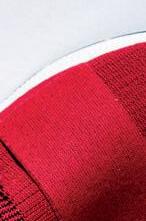





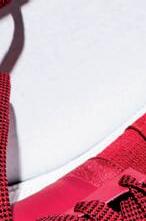









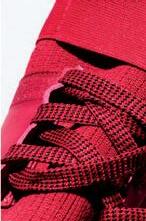

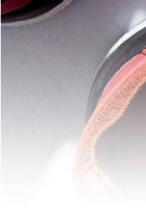













Stoma Tips is the new, free biannual magazine full of practical information and inspiring stories to help ostomates live with comfort and confidence. As an independent magazine, we provide, clear, honest and unbiased advice on ostomy products—written and reviewed by qualified stoma care nurses—to help readers find the stoma routine that works best for them.


We also encourage people to open up about their stoma and break down the stigmas that can keep them silent. Stoma Tips is a place for ostomates to share stories of things that have made them laugh and smile, as well as of how they overcame their more challenging moments. Our aim is to help ostomates of all ages and backgrounds live a life that’s as active, social and independent as before.







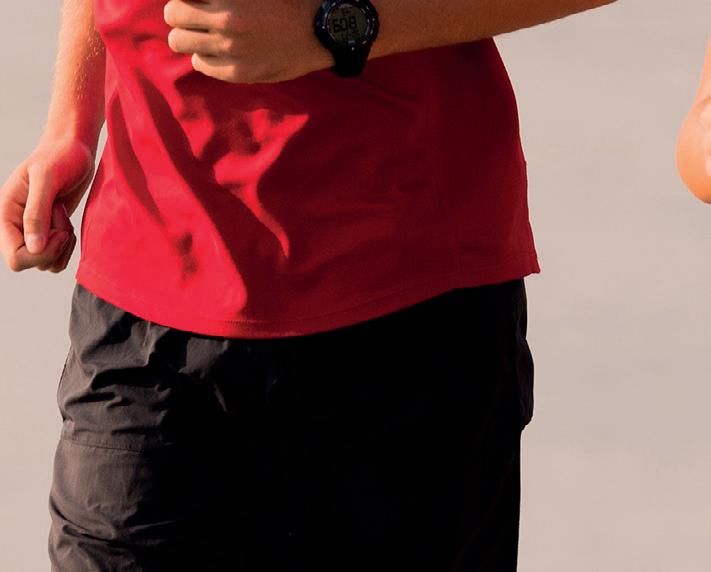
Getting back Running In association with: Tips PRACTICAL ADVICE AND INSPIRATION FOR A CONFIDENT, INDEPENDENT LIFE 001_ST2_Cover.indd 1 29/08/2018 15:39 Order your copy online now or get instant digital access www.stomatips.com In association with: Tips PRACTICAL ADVICE AND INSPIRATION FOR A CONFIDENT, INDEPENDENT LIFE Choosing the right appliances and accessories Stag with a stoma What to wear after stoma surgery Eating more of what you want 001_ST_S18_FM_Cover.indd 04/04/2018 08:38
T
Providing honest and accessible advice to your stoma patients
ips




























































































